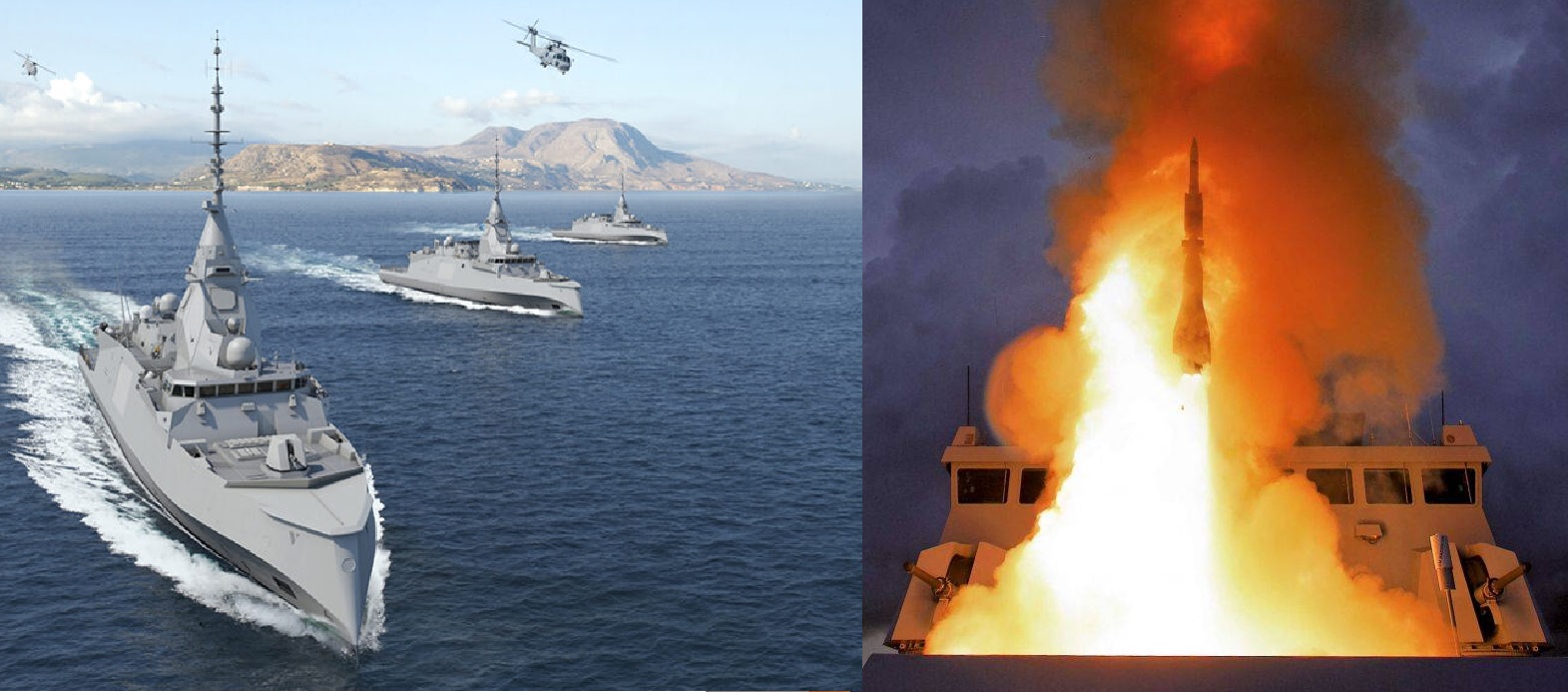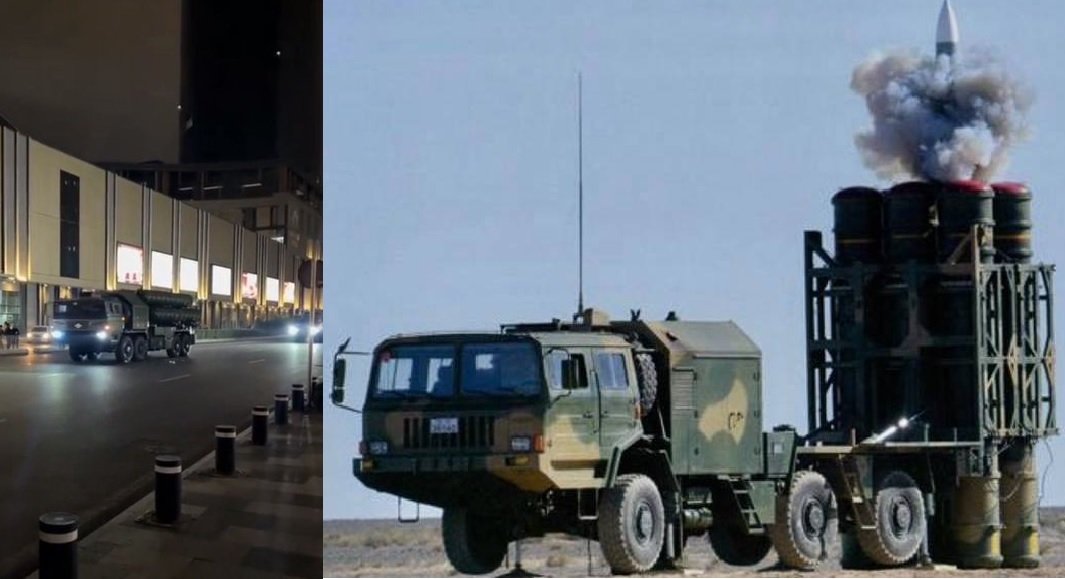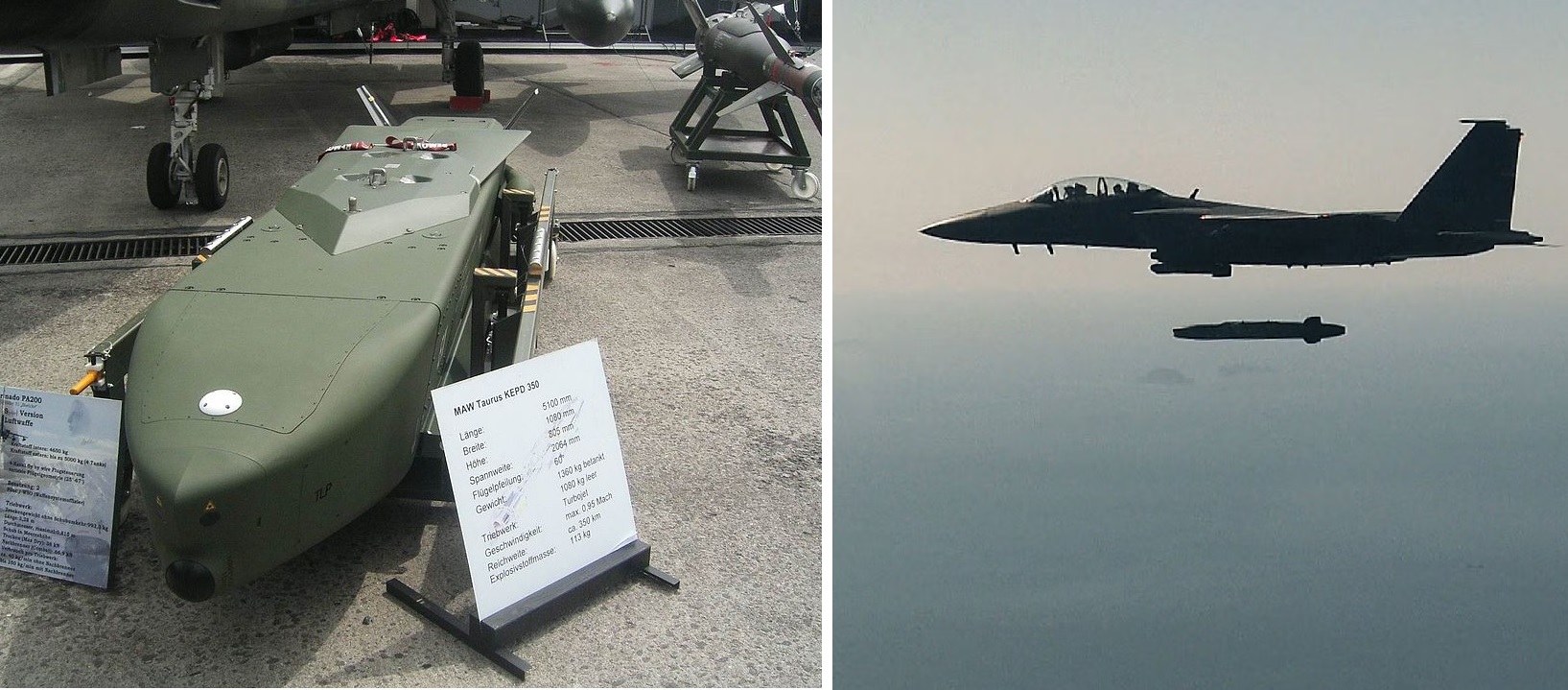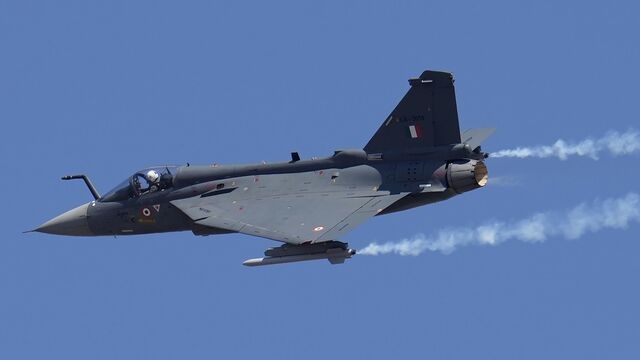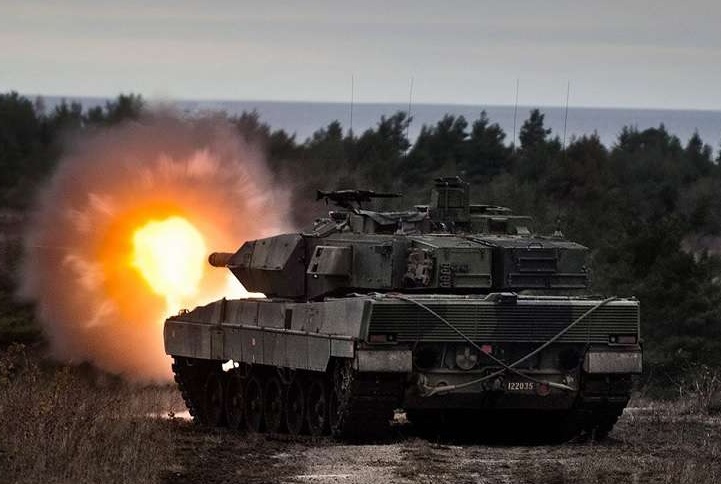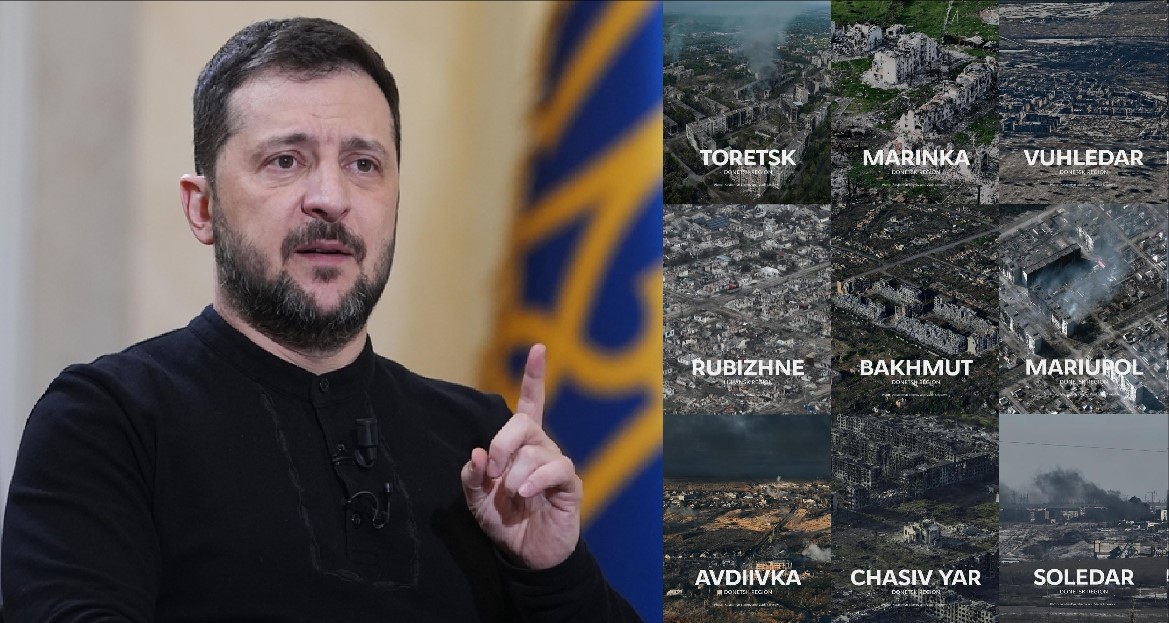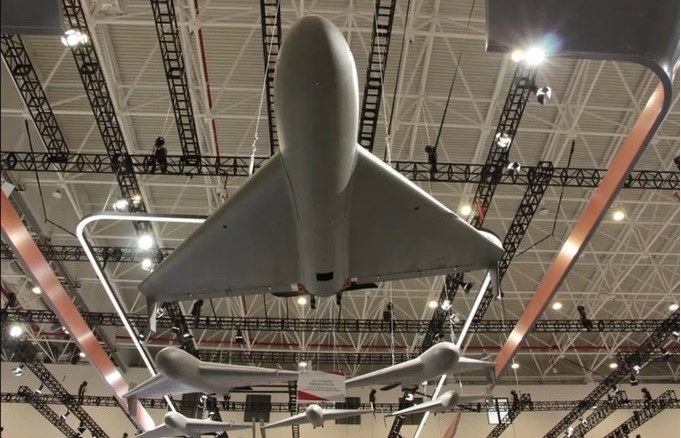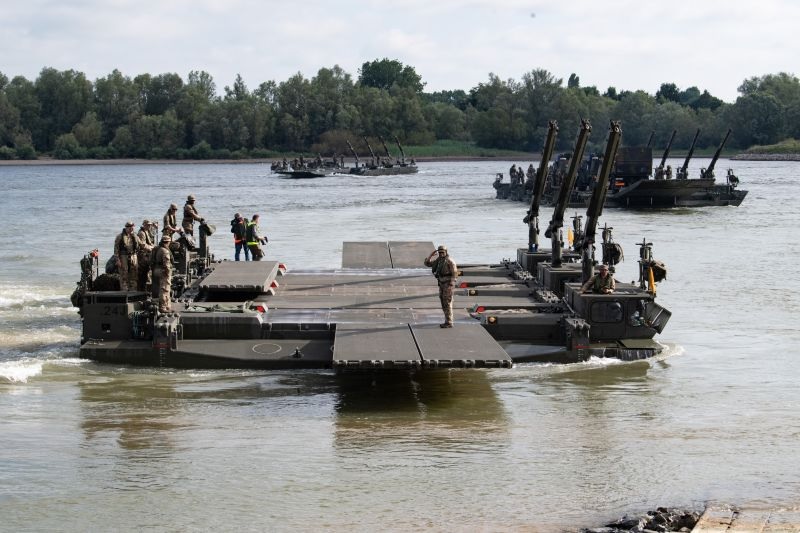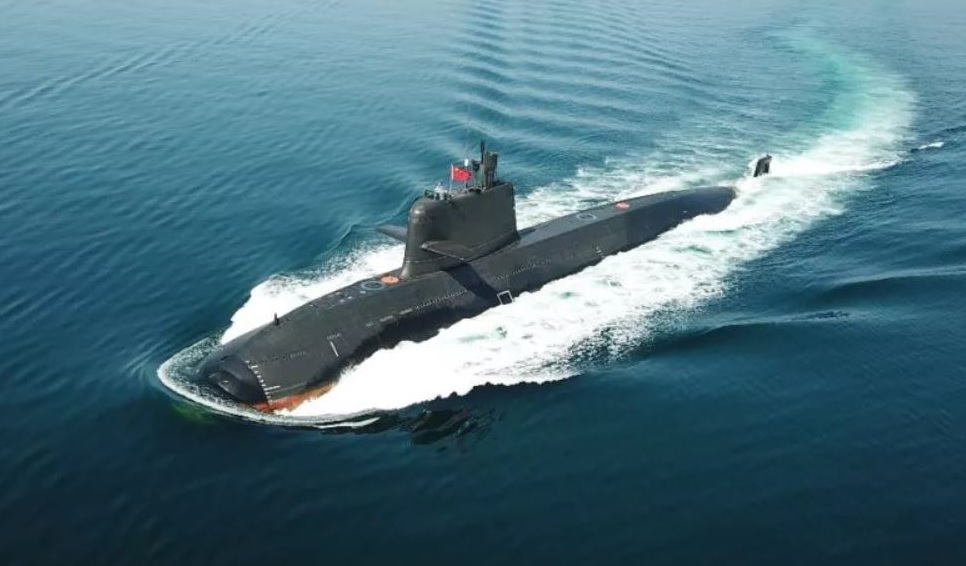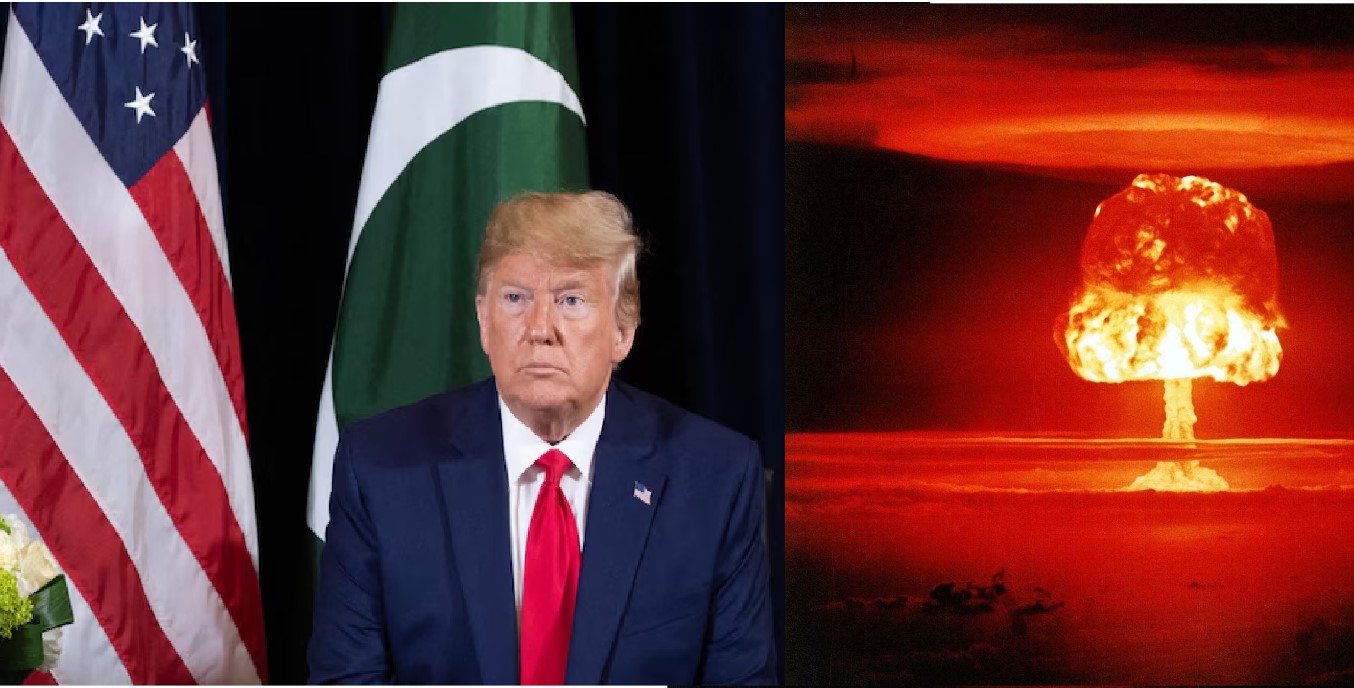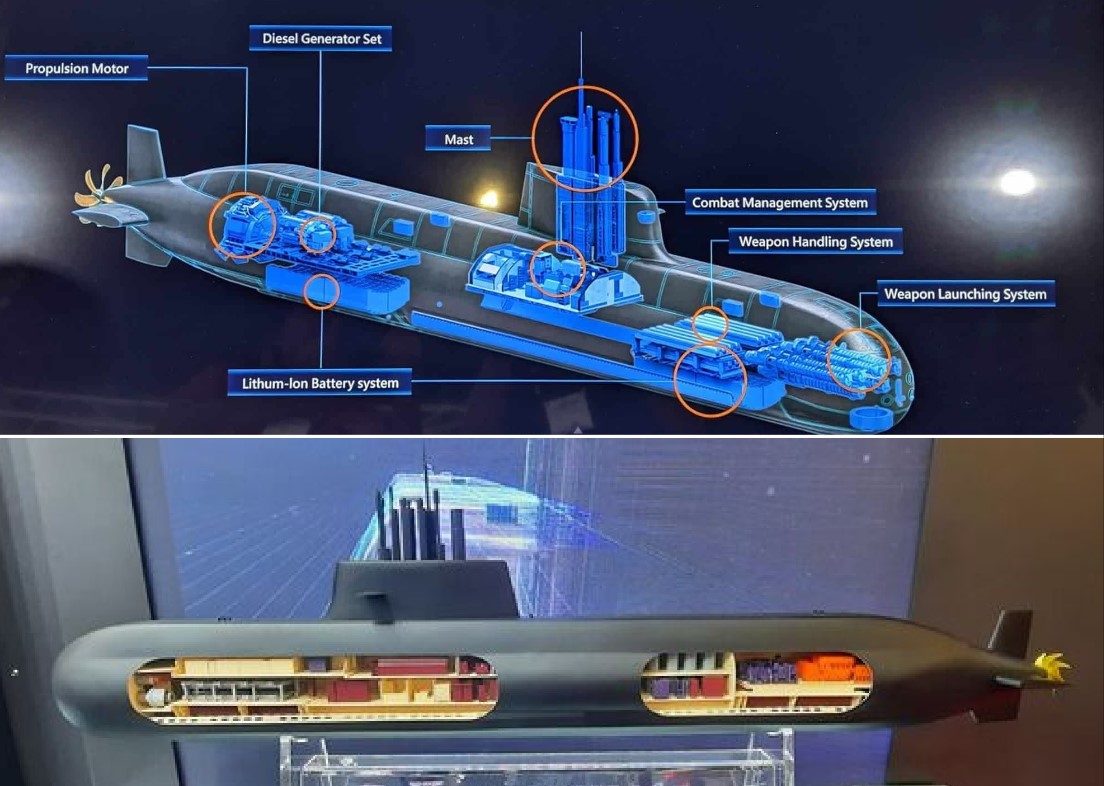World
Russian lawmaker Alexei Zhuravlev, a senior member of the State Duma’s Defense Committee, stated that Moscow is supplying weapons to Venezuela and sees “no obstacles” to sending the Oreshnik missile system to President Nicolás Maduro’s government. His remarks, first reported by Russian and European defense outlets, have drawn international attention — not just for what they reveal about deepening Moscow–Caracas ties, but also for what they imply about missile proliferation in the Western Hemisphere. A New-Class Russian Missile with Strategic Reach The Oreshnik, a name derived from the Russian word for “hazelnut tree,” is one of Moscow’s newest and most closely guarded missile projects. Believed to have evolved from the earlier RS-26 Rubezh program, the system sits in the intermediate-range ballistic missile (IRBM) category, capable of striking targets up to 5,500 kilometers away with multiple warheads. Reports from open sources, including Foreign Policy, RUSI, and Army Recognition, suggest the Oreshnik combines hypersonic speed—reaching up to Mach 10 in its terminal phase—with MIRV (Multiple Independently Targetable Reentry Vehicle) technology. This allows a single missile to deploy multiple warheads, each able to strike different targets, or release clusters of sub-munitions that overwhelm air defenses. Such capabilities make it exceptionally difficult to intercept, even for advanced systems like the U.S. Aegis or THAAD. Analysts have described the Oreshnik as a hybrid between a ballistic and hypersonic weapon — optimized for rapid launch, high survivability, and unpredictable flight trajectories. Why the Oreshnik Is So Special The Oreshnik is significant for three main reasons: Speed and Survivability:Its hypersonic glide and maneuvering phase drastically reduce interception windows. In military terms, that means even a well-defended area can be hit before defensive radars can react. Payload Versatility:Unlike older Russian IRBMs, the Oreshnik can carry either nuclear or conventional warheads. This dual-capability blurs the line between tactical and strategic deterrence — making adversaries uncertain about what type of warhead it carries at launch. Compact Mobility:The missile is reportedly designed for road-mobile launchers, allowing it to be relocated or hidden easily — a major tactical advantage. A mobile IRBM stationed in Latin America would be far harder to track or pre-emptively neutralize. Together, these features make the Oreshnik one of the most advanced missile systems Russia could theoretically export. Its transfer to a nation like Venezuela would mark the first time such a system entered the Western Hemisphere. Why Venezuela Matters in This Equation For Russia, supplying such systems to Venezuela carries clear strategic symbolism. Moscow has long viewed Caracas as one of its few steadfast partners in Latin America — a region the U.S. traditionally considers its own strategic backyard. If deployed, even a small number of Oreshnik launchers could bring parts of the Caribbean, the Gulf of Mexico, and even southern U.S. territories within theoretical strike range. This would not only elevate Venezuela’s deterrent power but also serve as a political message to Washington — a reminder that Russia can project power near U.S. borders, much like NATO operates near Russia’s own frontiers. For Maduro, the political calculus is clear. Amid growing domestic and international pressure, such an acquisition could signal military strength, national sovereignty, and a deeper partnership with Moscow. It would also diversify Venezuela’s defense portfolio, which already includes Russian S-300VM air-defense systems, Buk-M2E launchers, and Su-30MK2 fighters. The MTCR Factor — And Why Venezuela’s Absence Matters The Missile Technology Control Regime (MTCR), established in 1987, is a voluntary export-control framework designed to prevent the spread of missiles capable of delivering a 500 kg payload beyond 300 km. Russia joined the MTCR in 1995 and is expected to adhere to its export guidelines. Venezuela, however, is not an MTCR member. That absence has serious implications. Without MTCR membership, Venezuela faces no formal restriction or international scrutiny regarding the import of long-range missile systems. In practice, this means Russia could legally justify a transfer under its national export rules, even if doing so violates the spirit of MTCR principles. Supplying an Oreshnik — a system that far exceeds MTCR’s 300 km threshold — to a non-MTCR nation would be one of the most provocative missile exports in recent history. It could trigger new sanctions, prompt regional arms races, and further erode global non-proliferation norms. Strategic and Political Implications If realized, the deal would represent more than just another arms sale. It would mark a strategic expansion of Russian missile influence into the Americas. For Washington, it would recall Cold War echoes of the Cuban Missile Crisis, though in a modern form involving precision guidance, hypersonic glide, and conventional deterrence. Moreover, Venezuela’s acquisition would set a precedent — encouraging other non-MTCR states to pursue similar partnerships with Russia, Iran, or China. It would also complicate U.S. Southern Command’s defense planning, forcing attention and resources away from other theaters. Even if the missiles are never transferred, the rhetoric alone accomplishes part of Moscow’s goal: demonstrating that Russia still has partners willing to host its advanced systems — and that Western pressure cannot fully isolate it. The statement by Russian lawmaker Alexei Zhuravlev may be only a signal for now, but its implications are far-reaching. The Oreshnik missile system, with its hypersonic performance, MIRV capability, and strategic reach, represents a new class of threat — one that could reshape deterrence dynamics if it ever reaches Venezuela. And because Venezuela is not bound by the MTCR, such a transfer would bypass traditional export-control norms, potentially igniting a new chapter of missile politics in the Western Hemisphere. Even without a launch, the idea of Oreshnik in Caracas is enough to shift how the world views both Russian intent and the fragility of international non-proliferation systems.
Read More → Posted on 2025-11-05 11:29:26World
In a decisive move to strengthen the Marine Nationale’s surface fleet, French defense officials have announced that the fourth and fifth FDI-class frigates will be built with an expanded vertical launch system (VLS) configuration, doubling their missile capacity from 16 to 32 cells. The announcement came during parliamentary discussions on the 2026 Finance Bill, marking a major evolution in France’s naval modernization program. The decision not only reflects the changing threat landscape but also aligns France’s domestic FDI configuration with the more heavily armed Hellenic Navy’s Kimon-class, the export variant of the same design. French officials further confirmed that the first three ships in the class — Amiral Ronarc’h, Amiral Louzeau, and Amiral Castex — will be retrofitted with the same VLS expansion once construction schedules allow, ensuring fleet-wide standardization by the early 2030s. FDI Frigates: The New Backbone of France’s Blue-Water Fleet Developed by Naval Group, the FDI (Frégate de Défense et d’Intervention) program represents the cornerstone of France’s future surface combatant fleet. These 4,500-ton multi-mission frigates are designed to operate across all warfare domains — anti-air, anti-surface, anti-submarine, and electronic warfare — while integrating advanced automation, cybersecurity, and digital combat management systems. The lead ship, Amiral Ronarc’h, was officially delivered to the French Navy in October 2025 after two years of extensive sea trials. These trials validated the ship’s high level of digital integration, including its fully cyber-secure “digital twin” architecture, enabling predictive maintenance and AI-assisted combat management. The frigate’s SETIS 3.0 combat management system integrates seamlessly with the Thales SeaFire AESA radar, providing 360° multi-function coverage capable of detecting and tracking stealthy aerial and surface threats simultaneously. Doubling the Firepower: From 16 to 32 Aster Missiles In their original configuration, French FDIs were fitted with two Sylver A50 VLS modules, totaling 16 missile cells — sufficient for the MBDA Aster 15 and Aster 30 family of surface-to-air missiles. This setup offered strong self-defense and limited area air defense capabilities, ideal for independent deployments or lower-intensity operations. However, as global naval warfare evolves, France’s Ministry of the Armed Forces recognized the growing need for deeper air-defense magazines. The upgraded ships will now carry four Sylver A50 modules, doubling missile capacity to 32 cells — a configuration identical to Greece’s FDI HN (Kimon-class) frigates. This move significantly enhances the class’s anti-air warfare (AAW) resilience, allowing each ship to engage more targets simultaneously and sustain longer engagements during high-intensity operations or saturation attacks. It also allows for more flexible loadouts, enabling combinations of Aster 15s, Aster 30s, and potentially future missile types such as the Aster 30 Block 1NT, which adds anti-ballistic missile capabilities. The Aster Missile Family: Europe’s Shield at Sea The Aster missile series, jointly developed by MBDA and Thales, forms the backbone of Europe’s naval air defense. The Aster 15 variant has a range exceeding 30 kilometers and is optimized for intercepting sea-skimming anti-ship missiles, UAVs, and fast jets. Its longer-range sibling, the Aster 30, can destroy targets out to 120 kilometers, including supersonic missiles and short-range ballistic threats. Both missiles utilize the unique “PIF-PAF” (Pilotage en Force – Pilotage Aérodynamique Fort) control system, which combines aerodynamic steering and thrust-vector control. This dual mechanism allows the missile to withstand maneuvers up to 50 g, granting it exceptional agility and a near 90% kill probability against even the most evasive targets. The expanded VLS arrangement gives FDI frigates the missile depth required to serve as a credible air-defense escort, protecting carrier strike groups, amphibious task forces, or high-value merchant convoys across extended operations. Why France Is Upgrading Now The timing of this upgrade is directly tied to evolving operational lessons from recent global conflicts — particularly the widespread use of drones, long-range precision weapons, and saturation missile attacks observed in the Black Sea and Middle East. French naval planners concluded that the original 16-cell configuration was insufficient for extended engagements. While adequate for peacetime patrols or limited regional missions, modern naval operations demand “depth of fire” — the ability to sustain multiple interceptions over prolonged periods. The new configuration addresses this gap, allowing FDI frigates to operate confidently in contested environments alongside larger surface combatants such as the FREMM Aquitaine-class and the Horizon-class destroyers (Forbin and Chevalier Paul). Closing the Capability Gap When the FDI was first conceptualized in the mid-2010s, budgetary limits forced Naval Group to reduce the VLS capacity, even though the hull design could physically support more cells. Ironically, export clients such as Greece and Morocco opted for the fully armed version — exposing a capability imbalance within France’s own navy. The new upgrade finally corrects this, giving the French Navy parity with export-standard vessels. It also reflects a shift in Paris’s defense philosophy — favoring fully equipped platforms over “fitted for but not with” approaches that had characterized earlier procurement cycles. Strategic Implications for the French Navy By 2030, France will operate five FDI frigates, forming the next-generation complement to its eight FREMM frigates and two Horizon-class destroyers. Together, they will provide the Marine Nationale with a tiered and integrated air defense umbrella, spanning from self-defense to wide-area protection. FDI frigates (with 32 Asters) will serve as multi-role ships capable of fleet escort and independent deployments. FREMM frigates will focus on anti-submarine warfare and land-attack missions. Horizon-class destroyers will remain France’s premier air-defense command vessels, controlling battle groups through cooperative engagement with FDIs. This layered approach ensures strategic redundancy, allowing France to maintain high readiness across multiple maritime theaters — from the Atlantic and Mediterranean to overseas deployments in the Indo-Pacific. Looking Ahead Naval Group has already begun engineering design studies for retrofitting the first three FDIs. The upgrades will be scheduled during mid-life maintenance periods to minimize disruption to fleet availability. Each retrofit will likely include additional cooling systems, expanded power distribution, and software integration to manage the increased missile count and engagement scenarios. The expansion also opens the door for future weapon integration, such as MBDA’s MICA NG for close-in defense, or next-generation Aster variants with enhanced sensor fusion and intercept profiles. France’s decision to double the missile capacity of its FDI frigates is more than a technical upgrade — it’s a strategic recalibration of naval power for the 2030s. As maritime threats evolve toward faster, stealthier, and more numerous aerial systems, the French Navy is ensuring its newest warships have both the reach and resilience to respond. By aligning domestic ships with their export counterparts and future-proofing them for sustained operations, Paris is sending a clear message: the Marine Nationale intends to remain a front-line force in Europe’s maritime defense — equipped, adaptable, and ready for the high-end fight.
Read More → Posted on 2025-11-04 17:06:10World
Satellite imagery from El-Fashir, the capital of North Darfur, has revealed scenes of unspeakable horror — mass graves, scorched villages, and large patches of terrain stained by what analysts believe are signs of mass killings. The images, verified by the Yale Humanitarian Research Lab and independent conflict-monitoring groups, show the aftermath of massacres carried out by the Rapid Support Forces (RSF) and allied militias, who have swept across the city leaving thousands of civilians dead. What makes this particularly chilling is that these killings are visible from space — entire neighborhoods have been wiped out, bodies left unburied, and fires still smoldering weeks after the RSF’s advance. One of the RSF commanders, Abu Lulu, reportedly led the operations in El-Fashir, where satellite evidence now captures the scale of what rights groups describe as genocidal violence. The Horror in El-Fashir According to field sources and humanitarian monitors, over 1,500 civilians — mostly belonging to the non-Arab Masalit and Fur ethnic groups — were killed in a span of just a few days in late October. Hospitals, markets, and even displacement camps were bombarded or burned. Witnesses describe streets “lined with bodies” and neighborhoods where “no one is left alive.” Satellite photographs taken over the city between October 24 and 28 show several mass burial sites and what appear to be bloodstained roads near the old market district. The imagery confirms reports from survivors who said that RSF gunmen executed civilians and dumped their bodies in open fields. Analysts say this massacre bears a grim resemblance to the atrocities that took place in Darfur two decades ago — but this time, the world can see it in real time, from orbit. How the Civil War Began To understand why Sudan is collapsing again, one must go back to April 2023, when fighting erupted between two former allies — the Sudanese Armed Forces (SAF), led by General Abdel Fattah al-Burhan, and the Rapid Support Forces (RSF), commanded by Mohamed Hamdan Dagalo, known as Hemedti. Both men once shared power after the 2019 revolution that toppled long-time dictator Omar al-Bashir. But deep mistrust grew over who would control Sudan’s military, economy, and gold-rich territories. When talks about integrating the RSF into the national army collapsed, Sudan descended into a brutal internal war. The SAF controls parts of eastern and northern Sudan, while the RSF has entrenched itself in western regions — especially Darfur, where it has drawn on its tribal and militia roots to wage a campaign that many observers now call ethnic cleansing. Why Darfur Again? Darfur has long been a tragic symbol of Sudan’s internal divisions. In the early 2000s, Arab militias known as the Janjaweed (from which the RSF later evolved) carried out mass killings of non-Arab groups. More than 300,000 people were killed, and millions displaced in what the world eventually recognized as genocide. After South Sudan’s secession in 2011, Sudan’s western regions were left poor, unstable, and heavily armed — fertile ground for warlords to rise again. Today’s RSF is essentially the modernized Janjaweed, equipped with heavy weapons, drones, and foreign backing — particularly from the United Arab Emirates (UAE), which has been accused by Western intelligence of supplying arms and logistical support to Hemedti’s forces. This connection, combined with Sudan’s fractured state and lack of unified command, has allowed the RSF to launch one of the deadliest campaigns since the 1994 Rwandan genocide. Why the Massacres Are Happening Now The siege of El-Fashir represents a critical turning point. It was the last major city in Darfur still held by the national army (SAF). When RSF fighters stormed the city, they targeted not only soldiers but entire communities suspected of supporting the government. Eyewitness accounts describe door-to-door executions, sexual violence, and systematic destruction of Masalit villages. The RSF’s campaign appears aimed at erasing opposition strongholds, creating a demographic shift in favor of pro-RSF Arab tribes. Satellite imagery shows dozens of burned residential areas, indicating a coordinated effort rather than random fighting. The scenes are so severe that analysts at Yale’s Humanitarian Research Lab concluded the violence “constitutes clear evidence of mass atrocities.” Sudan’s Long History of Division Sudan’s political fractures go back decades. Once Africa’s largest country, Sudan has endured two civil wars, countless coups, and the eventual secession of South Sudan in 2011. That division, meant to bring peace, instead left behind an unstable north dominated by military rule, militia networks, and economic collapse. Darfur, in particular, has remained a center of rebellion and repression. Its ethnic complexity — a mix of Arab and non-Arab African communities — has made it vulnerable to the same manipulation by armed groups and political elites that fueled earlier genocides. What’s happening now is not sudden. It’s the reignition of an unresolved ethnic war, now amplified by modern weapons and geopolitical interests. The United Nations’ Stance The United Nations, through its human rights office (OHCHR), has condemned the killings in El-Fashir as “indications of ongoing genocide-level crimes.” The UN’s humanitarian chief, Martin Griffiths, said, “We are witnessing mass atrocities through our screens. The evidence is irrefutable.” Despite such statements, the UN has struggled to act. Its mission in Sudan was expelled by local authorities in 2023, and international access remains limited. Humanitarian convoys are routinely looted, and foreign journalists are banned from most RSF-controlled zones. The Security Council remains divided, with global attention consumed by other conflicts. Yet, as satellite images continue to surface, the world can no longer claim ignorance — the atrocities are documented from above, pixel by pixel. A Genocide the World Can See What makes the El-Fashir massacre unprecedented is that it is a genocide visible from orbit.Commercial and humanitarian satellites have captured rows of bodies, burned-out shelters, and blood-soaked roads, confirming what survivors have been saying for months. This isn’t a case of conflicting reports or propaganda — the imagery aligns with witness testimonies and independent analyses. The truth is visible to anyone who looks. Still, the world’s response has been muted. While condemnations continue, there has been no major intervention, no safe zones, and little relief for the civilians trapped in Darfur’s nightmare. Sudan stands once again on the edge of a humanitarian abyss. The civil war between the army and the RSF has mutated into a campaign of extermination, with ethnic communities caught in the crossfire. Satellite imagery has only confirmed what survivors have screamed for months — a genocide is unfolding, and the world is watching. The question is no longer whether atrocities are happening — they are visible from space. The real question is whether the world will act, or let Sudan’s tragedy become another chapter of silence in human history.
Read More → Posted on 2025-11-04 16:59:21World
Azerbaijan has unveiled its newest addition to national defense — the Chinese HQ-9BE long-range surface-to-air missile system, also known by its export name FD-2000B. The system, capable of engaging targets at ranges of up to 300 kilometers, marks a significant leap in Baku’s air-defense network. But behind the impressive specifications lies a critical question: how effective is it in real combat — especially against modern, high-speed threats like India’s BrahMos missile? Azerbaijan’s New Acquisition The HQ-9BE was displayed publicly for the first time during preparations for Baku’s upcoming military parade, confirming that Azerbaijan has joined the small group of nations — including Pakistan, Morocco, and Egypt — that operate China’s flagship long-range SAM system. Built by the China Aerospace Science and Industry Corporation (CASIC), the HQ-9BE is designed to intercept aircraft, cruise missiles, and short-range ballistic missiles. Its vertical cold-launch system mounted on an 8×8 transporter allows rapid deployment, while its phased-array radar provides all-weather, 360-degree coverage. Each missile reportedly travels at Mach 4.2, striking targets at altitudes up to 50 kilometers. The system’s advanced radar and datalink allow simultaneous tracking of multiple threats, giving Azerbaijan the kind of long-range protection that was previously unavailable in the South Caucasus. While Baku has not disclosed the number of units purchased, satellite imagery and parade footage show at least two launcher vehicles, suggesting one full battery has been delivered, with options for expansion in later phases. The deal is understood to have been signed as part of the Azerbaijan–China Strategic Partnership Agreement in 2024, which emphasized defense technology transfers and joint training programs. The Shadow of Combat Performance However, the HQ-9 family’s reputation has not been without controversy. The system is technically impressive on paper, yet its real-world performance remains largely untested in active combat. Unlike systems such as the U.S. Patriot or Russia’s S-400 series, the HQ-9BE has never been battle-tested in a full-scale conflict. Its operational credibility suffered further after reports emerged that the HQ-9BE system deployed in Pakistan failed during operational use and was later destroyed during Indian strikes. Defense sources claim that Pakistan’s Chinese-supplied HQ-9BE batteries, meant to provide long-range protection, were unable to intercept incoming precision-guided munitions, and at least one launcher site was neutralized by Indian air or missile attacks. These incidents have raised serious questions about the system’s survivability and effectiveness under real-world conditions. The HQ-9BE’s reported failure in Pakistan has led analysts to label it as a “not battle-tested” system — one that may look formidable in parades but lacks a proven record in combat. While Chinese defense outlets downplay these claims, the events have highlighted the system’s vulnerability when confronted with coordinated, precision, and high-speed strikes backed by advanced electronic warfare. Facing a BrahMos-Class Challenge The real test for Azerbaijan’s new acquisition would come if neighboring Armenia were to acquire an offensive weapon such as India’s BrahMos supersonic cruise missile, which Yerevan has reportedly expressed interest in. The BrahMos travels at speeds nearing Mach 3, flying as low as 10–15 meters above ground or sea level during its terminal phase. Such characteristics leave minimal reaction time for ground-based radars, especially if terrain or electronic countermeasures are in play. Defense experts agree that even advanced SAMs like the HQ-9BE would struggle to detect and intercept a BrahMos salvo without layered radar coverage, airborne early warning (AWACS) support, and real-time tracking networks. The HQ-9BE’s radar can theoretically detect a large, high-flying aircraft at 300 km, but against a low-flying supersonic cruise missile, effective detection and engagement range could shrink to less than 40 km. That means only seconds to identify, lock, and fire — a window that often favors the attacker. If Armenia were to field BrahMos, the missile’s speed, trajectory, and precision could potentially overwhelm isolated HQ-9BE batteries unless Azerbaijan integrates its system tightly with Israeli radars, Turkish surveillance drones, and local early-warning sensors — creating a true multi-layered defense net. Strategic Symbolism vs. Practical Reality For Azerbaijan, the purchase still represents a strategic milestone. The HQ-9BE extends its air-defense range far beyond older systems like the Tor-M2KM, Buk-MB, and S-125 Pechora, giving Baku an outer defensive ring capable of covering critical infrastructure and population centers. It also signals deepening defense ties with Beijing, further diversifying Azerbaijan’s procurement away from Russia and the West. However, modern warfare has repeatedly shown that range alone does not equal protection. The HQ-9BE’s failure in Pakistan, its lack of combat experience, and its uncertain performance against supersonic threats have made experts question whether it can truly deliver what its specifications promise. If Armenia moves ahead with the BrahMos purchase, the South Caucasus could become one of the world’s few regions where a Chinese air-defense system and an Indian strike missile face each other in potential opposition — a direct test of two competing military technologies. Azerbaijan’s unveiling of the HQ-9BE marks both ambition and uncertainty. It strengthens the country’s layered defense structure, showcasing Baku’s intent to modernize and protect its skies through global partnerships. Yet, questions remain over the system’s real-world performance — especially after its reported failure and destruction in Pakistan — and whether it could withstand supersonic, low-altitude precision weapons like the BrahMos. Whether the HQ-9BE proves a deterrent or a liability will depend not just on the missile’s range, but on how effectively Azerbaijan integrates it into its broader defense ecosystem — where speed, intelligence, and coordination matter as much as hardware. For now, Azerbaijan has taken a major step forward. But in the unforgiving realities of modern warfare, only battle — not parades — will decide whether the HQ-9BE truly stands the test of combat.
Read More → Posted on 2025-11-04 16:43:08World
Germany has reconfirmed that it will not transfer the Taurus KEPD 350 cruise missiles to Ukraine, even as it prepares to provide an additional €3 billion in aid for 2026. The decision, restated by Defence Minister Boris Pistorius, reflects Berlin’s continuing caution over escalation risks and the technical complexity involved in integrating the missile into Ukraine’s arsenal. The Taurus issue has been one of the most debated topics in Europe’s security landscape since Ukraine first requested the system in 2023. The long-range, air-launched cruise missile, developed through German–Swedish cooperation, can strike targets more than 500 kilometres away with high precision, capable of destroying bunkers, command centres, and reinforced structures. For Kyiv, this capability could extend its reach deep into Russian-occupied areas or even within Russia itself — something Berlin views as a potential red line. Stealth, Penetration and the Damage Question The Taurus is designed with stealth features and a low radar cross-section, making it harder for Russian radar to detect. It can fly at ultra-low altitudes, using terrain-following and sea-skimming flight modes to avoid detection. Combined with its MEPHISTO dual-stage warhead, capable of penetrating hardened bunkers before detonation, the missile can inflict heavy damage on critical infrastructure. This capability also explains Germany’s reluctance — such a weapon could cause massive destruction to Russian military assets, potentially damaging Germany–Russia relations and triggering retaliatory consequences. Officials in Berlin fear that handing over a stealth cruise missile capable of deep strikes might draw Germany directly into the conflict. Escalation and Integration Concerns German officials have consistently warned that transferring the Taurus would risk direct involvement in the conflict. Chancellor Olaf Scholz previously explained that using such a system requires detailed targeting data and mission programming, which could demand German personnel participation. Berlin fears this could be viewed by Moscow as Germany taking part in combat operations — sharply increasing the risk of escalation. The Ministry of Defence has also cited technical integration challenges, noting that the Taurus would need extensive adaptation to be compatible with Ukraine’s Soviet-era aircraft. Unlike the British Storm Shadow or French SCALP-EG missiles already deployed by Kyiv, integrating the Taurus would require months of software alignment, training, and testing. Berlin Balances Support with Restraint Despite the refusal to send the Taurus, Germany remains one of Ukraine’s largest military supporters in Europe. The new aid package for 2026 — part of a longer-term security commitment — includes IRIS-T air defence systems, ammunition production support, and expanded joint manufacturing of weapons inside Ukraine. This approach reflects Berlin’s strategic balance — maintaining strong support for Kyiv while avoiding actions that could be viewed as provocative by Russia. Officials repeatedly emphasize that Germany’s goal is to strengthen Ukraine’s defence, not to provide systems that enable offensive strikes inside Russian territory. Political and Public Dimensions Domestically, the Taurus debate has been politically charged. Several motions in the Bundestag to authorize the missile’s delivery were defeated, with both government and opposition lawmakers voicing concerns about escalation. Public opinion polls show that while Germans generally support aid to Ukraine, many oppose supplying long-range weapons that could expand the war’s scope. The issue became more sensitive after Russia’s warnings that any delivery would make Germany a “direct participant” in the conflict — a statement Berlin clearly took seriously. A Strategic Turning Point For Ukraine, the denial of the Taurus represents a significant setback in its pursuit of deep-strike capabilities. With its 500 km range, stealth profile, and high-penetration warhead, the Taurus could have enabled Ukraine to target Russian logistics hubs, bridges, and command centres deep behind the front. Nevertheless, Germany has indicated it may pursue joint production of long-range systems with Ukraine, signalling a shift toward industrial cooperation rather than direct transfers. Such cooperation would help Ukraine build indigenous strike capabilities while reducing Berlin’s exposure to political and military risk. The Broader Implications Germany’s refusal to supply the Taurus underscores the delicate balance that European allies face — supporting Ukraine militarily while avoiding direct confrontation with Russia. The decision highlights how domestic politics, public opinion, and legal frameworks continue to influence Germany’s defence policy even as Europe faces its most serious security crisis in decades. As of now, Berlin’s position is clear: support for Ukraine will grow, but the Taurus KEPD 350 will remain in German hands. While Kyiv views the missile as a potential game-changer, Germany sees it as a risk multiplier — a system whose deployment could inflict not only heavy damage on Russian targets, but also severe diplomatic fallout for Germany itself.
Read More → Posted on 2025-11-04 15:56:33World
SpaceX is poised to take on a new role in U.S. national security space programs — this time not as a launch provider, but as a prime integrator. According to The Wall Street Journal, the company is expected to receive nearly $2 billion from the Pentagon to develop a constellation of radar satellites forming the orbital foundation of President Donald Trump’s ambitious Golden Dome missile defense system. The initiative, which aims to integrate space-based sensors with ground and air interceptors, could grow to include more than 600 satellites, creating a new layer of defense against airborne and missile threats. The funding was reportedly embedded in the July 2025 tax and spending package, marking the first formal allocation for the Golden Dome’s orbital architecture. While the Pentagon declined to comment on the classified details, sources familiar with the program told the Journal that the project represents the next major step toward fielding a persistent, space-driven missile warning and tracking network. The Golden Dome Vision The Golden Dome program represents one of the most far-reaching missile defense plans ever proposed by the United States. Designed to fuse space-based sensors, ground radars, and interceptor networks, the system aims to detect, track, and destroy incoming missiles before they reach American soil. President Trump has repeatedly emphasized the need for a “space-integrated shield” that can neutralize threats “within seconds, not minutes,” calling the Golden Dome “the largest defense project since the Strategic Defense Initiative.” The administration has publicly referenced a $175 billion starting budget, though analysts believe the total cost could eventually exceed $400 billion when all components—space, ground, and interceptor systems—are included. The goal is to build a fully connected kill chain that can follow hostile launches from boost phase to impact, linking every data source into one instantaneous decision network. At the center of that chain will be SpaceX’s Air-Moving Target Indicator (AMTI) satellites — a specialized radar constellation designed to detect and track airborne threats, including bomber formations, cruise missiles, and hypersonic glide vehicles. The AMTI system will act as the orbital layer of the Golden Dome, feeding live data to interceptors and command centers across multiple military branches. How the AMTI Constellation Works The AMTI network’s core mission is persistent tracking. Each satellite will carry a radar payload capable of Doppler discrimination, allowing it to distinguish moving aircraft and missile targets from static terrain or ocean clutter. These satellites will orbit in low Earth orbit (LEO), providing global revisit rates that traditional radar systems on Earth or in geosynchronous orbit cannot match. Data collected from AMTI will be transmitted through secure crosslinks to the Space Development Agency’s Proliferated Warfighter Space Architecture (PWSA) — a communications backbone already under deployment. From there, the information will flow into Milnet, a classified network developed jointly by the Space Force and National Reconnaissance Office (NRO) to connect sensors, command centers, and interceptor units. This setup allows for real-time transmission of weapons-quality tracks to missile batteries, fighter aircraft, and radar operators. In a practical scenario, AMTI satellites could detect the radar signature of a low-flying cruise missile, maintain custody as it maneuvers, and transmit targeting data to air defense systems within seconds, closing engagement timelines across multiple domains. SpaceX’s Expanding Role in National Defense If awarded, this contract would mark a transformational milestone for SpaceX. Long recognized for its dominance in commercial launch services and the Starlink internet constellation, the company would become a prime integrator for a Pentagon-directed satellite network—a position traditionally reserved for defense giants like Lockheed Martin and Northrop Grumman. SpaceX’s existing Starlink infrastructure, which now exceeds 10,000 satellites launched, gives it an unparalleled production cadence and cost advantage. The company’s assembly lines, Starlink-derived bus designs, and reusable launch systems provide a tested foundation for large-scale constellations. The AMTI network would likely draw upon this industrial base, tailored for military-grade hardening and secure communication payloads. In parallel, SpaceX is reportedly being considered for additional Golden Dome subprograms, including the Milnet communications architecture and a ground vehicle tracking layer—an indication that the company could manage several interconnected segments of the broader system. Balancing Innovation with Oversight Despite excitement within defense circles, the program raises questions about industrial concentration and cost realism. Lawmakers on Capitol Hill have already voiced concern over the risk of “vendor lock,” warning against giving too much of the defense architecture to a single commercial firm. “I don’t want to end up where we pick one company and go down a path we can’t afford to turn from,” Senator Rick Scott said during a recent defense hearing. The Space Development Agency’s multi-vendor model, which includes companies like York Space Systems, Boeing, and Terran Orbital, has been cited as a template for maintaining competition in national security space programs. Budget analysts share similar caution. The Congressional Budget Office’s 2025 assessment estimated that a fully operational space-based interceptor and sensor constellation could cost between $160 billion and $540 billion over 20 years. Those projections, however, did not include the AMTI layer, suggesting that actual costs may rise even further as the program matures. Toward an Orbital Defense Layer The Pentagon has stated that space-based moving target indication will not replace terrestrial or airborne radars, but rather augment them. A spaceborne radar layer provides persistent global coverage and early cueing, especially valuable against low-flying or stealth threats that evade ground-based sensors. When coupled with ground radars like the Long Range Discrimination Radar (LRDR) in Alaska—which recently tracked its first intercontinental ballistic missile (ICBM)-representative target—the AMTI network would complete the detection chain envisioned for Golden Dome. Operational details remain classified. The frequency bands, satellite bus designs, orbit inclinations, and production timeline have not been disclosed. However, analysts expect initial prototypes to launch before 2028, with operational capability targeted later in the decade. The Bigger Picture For the U.S. military, the AMTI constellation represents more than a sensor layer — it signals a strategic shift toward integrating commercial innovation into defense architecture. For SpaceX, it marks entry into a new echelon of defense contracting, potentially redefining how large constellations are built and operated for security missions. If the program succeeds, the Golden Dome could emerge as the most complex missile defense network ever constructed, uniting thousands of assets across orbit, air, and land into a single synchronized defense web. Yet challenges in cost control, program execution, and data integration loom large. For now, one thing is clear: with SpaceX’s AMTI satellites at its core, the Golden Dome project is no longer just a vision—it’s becoming a tangible step toward a new era of orbital defense.
Read More → Posted on 2025-11-04 15:13:45India
India’s Defence Research and Development Organisation (DRDO) has entered an advanced stage of testing for its next-generation Swayam Raksha Kavach (SRK) electronic warfare (EW) suite — a critical upgrade designed to significantly enhance the survivability and self-protection capabilities of the HAL Tejas Mk-1A light combat aircraft. The system, whose name translates to “Self-Protection Shield,” represents a new milestone in India’s growing self-reliance in airborne electronic warfare technologies. From D-29 to SRK: Evolution of India’s Airborne EW Capability The SRK suite builds upon the legacy of DRDO’s earlier D-29 EW suite, which was originally developed for the Indian Air Force’s MiG-29 fleet over a decade ago. While the D-29 provided basic radar warning and jamming capabilities, the new SRK suite incorporates modernized hardware, advanced digital signal processing, and a fully integrated architecture tailored for the Tejas Mk-1A’s avionics and mission systems. According to DRDO officials, the development of the SRK system began in 2021, led by the Combat Aircraft Systems Development and Integration Centre (CASDIC). Initial ground integration tests have now transitioned into flight trials aboard a Tejas Mk-1A test aircraft. The system includes a radar warning receiver (RWR) seamlessly integrated into the airframe and an external jammer pod mounted on a dedicated hardpoint. This dual-configuration enables both passive and active defense modes, detecting and countering hostile radar emissions in real time. Enhanced Capabilities and Design Features The Swayam Raksha Kavach is designed to deliver multi-threat protection, capable of handling modern radar-guided air-to-air and surface-to-air missile threats. It employs wideband detection, real-time emitter classification, and adaptive jamming waveforms — a leap forward from the D-29’s analog-based processing. DRDO sources indicate that SRK’s modular design will allow future upgrades through software-defined enhancements, supporting emerging radar threats without major hardware changes. The system also leverages indigenous digital receiver technology, improved power management for jamming transmitters, and a lighter structure to minimize drag and preserve aircraft performance. Flight-Testing and Deployment Timeline Flight trials for the SRK suite began in late 2024 and are expected to continue through mid-2026, focusing on verifying system performance across multiple threat environments. Once trials are completed, the Tejas Mk-1A fleet — currently under large-scale production by Hindustan Aeronautics Limited (HAL) — will begin receiving the SRK package by end of 2026, as part of its progressive induction into the Indian Air Force. The IAF has ordered 83 Tejas Mk-1A aircraft, featuring upgraded radar, improved electronic warfare capability, and enhanced maintainability. The SRK EW suite will serve as a central element of the Mk-1A’s self-protection system, complementing its AESA radar and networked combat avionics. Inside the Swayam Raksha Kavach: Architecture and Components A schematic released by DRDO (as seen in the Electronic Warfare Suite for Fighter Aircraft – Tejas display during the Samanvay summit) provides a detailed insight into the layout and technology of the SRK system. The SRK suite consists of both internal and external components: Radar Warning Receiver (RWR): Detects and identifies hostile radar emissions. Digital Front-End Assemblies (DFEA): Positioned at multiple locations on the aircraft to ensure 360° coverage. Unified Receiver Exciter Processor (UREP): Acts as the system’s “brain,” handling radar signal analysis, emitter classification, and coordination of countermeasures. Transmitters and Antennas: Multiple Tx (transmitting) and Rx (receiving) antennas are distributed along the airframe for comprehensive coverage. External Jammer Pod: Provides high-power jamming against radar-guided threats using Digital Radio Frequency Memory (DRFM) technology. Internally, the EW suite’s architecture includes a Scanning Receiver and Exciter, a High Power Output Interface (HPOI) Receiver, and a DRFM Receiver and Exciter. The DRFM module allows the system to capture radar signals, modify them, and retransmit them to deceive or saturate enemy radar systems. Together, these components form an integrated Radar Warning and Jammer (RWJ) system that enables both passive detection and active counteraction against radar-based threats. Technology Transfer and Industrial Collaboration During the Samanvay 2025 industry summit held in Bangalore on 29–30 October 2025, DRDO formally transferred several technologies to its industry partners, reinforcing its strategy of joint development and production. Among these transfers was the improved D-29 EW suite technology, handed over to Bharat Electronics Limited (BEL) for large-scale production and further optimization. BEL will also serve as a key industrial partner for the production and integration of SRK, leveraging its expertise in airborne EW systems and radar technologies. This collaboration aligns with India’s “Atmanirbhar Bharat” initiative, aimed at fostering indigenous defense manufacturing and reducing dependency on foreign suppliers. Strategic Implications The induction of the SRK suite represents a critical step toward modernizing India’s electronic warfare ecosystem. With increasing regional threats from advanced radar and missile systems, the ability to detect, identify, and counter enemy emitters in complex electronic environments has become essential for mission survivability. Moreover, the modular nature of the SRK makes it adaptable not only for the Tejas Mk-1A but also for potential integration with future Indian platforms, such as the Tejas Mk-2, Advanced Medium Combat Aircraft (AMCA), and even unmanned combat aerial systems (UCAVs) under development.
Read More → Posted on 2025-11-04 15:02:02World
Saab has announced a SEK 1 billion (about USD 90 million) production contract from Sweden’s Defence Materiel Administration (FMV) for a new launcher system designed for both the Gripen C/D and the new-generation Gripen E fighters. Revealed on November 4, 2025, the deal transitions the launcher from development into full-scale manufacturing and marks another deliberate step in Sweden’s long-term effort to keep its air combat fleet ready, interoperable, and future-proof as the Gripen E enters service. From Trials to Production Confidence This production decision follows a 2022 contract that covered the design and integration phase, with optional series production to be exercised once testing had matured. Saab’s announcement confirms that those tests have now delivered the expected results. Pulling the option into effect demonstrates test confidence and a clear Swedish plan to standardize armament procedures across its mixed Gripen fleet. The timing also reinforces Stockholm’s security-of-supply strategy, anchoring a critical subsystem—responsible for weapons carriage and release—inside Sweden’s domestic defense industry. At a time when European nations are tightening readiness cycles and seeking supply autonomy, keeping such production local aligns perfectly with Sweden’s broader defense policy. What the Launcher System Does At first glance, a launcher might seem like a minor mechanical component—but Saab’s new system is far more advanced. It serves as the digital and electrical bridge between aircraft and its external stores, managing everything from power delivery to data exchange and safe separation. Described as a “smart, digitally networked launcher,” the new unit connects the Gripen’s stores management system to weapons and pods through a robust and secure link. This means each weapon receives accurate targeting data, real-time status updates, and a precisely timed release signal. In Swedish service, this system supports the country’s core air-to-air weapons inventory: Meteor for long-range intercepts, providing networked mid-course updates. IRIS-T for close-in dogfighting and defensive engagements. Electronic warfare and countermeasure pods, which enhance survivability and situational awareness. Together, these capabilities ensure reliable pre-launch communication, safe jettison logic, and post-launch reporting—the sort of back-end performance that shortens ground crew turnaround times and boosts pilot confidence in mixed weapon loadouts. Operational Gains: One Launcher, Two Gripen Generations Sweden’s Air Force is in a transition period: the new Gripen E fleet is ramping up, while the Gripen C/D remains essential to national and NATO defense duties. Adopting a common launcher across both variants eliminates logistical and training friction. For armorers and ground crews, this translates into: Unified procedures for arming and maintaining both aircraft types. Reduced training hours, since crews no longer need to master separate systems. Faster sortie generation, as common tools and parts simplify preparation and reloading. As Saab notes, it’s a small piece of metal and software—but one that buys big operational tempo. With the same hardware and software standard across its fleets, the Swedish Air Force gains agility in deployment and maintenance, a key factor in modern air operations where availability equals deterrence. Aligned with NATO and Regional Security Goals The decision also dovetails with Sweden’s NATO membership in March 2024 and the alliance’s ongoing drive to strengthen air policing over the Baltic and High North. Standardizing launch systems across Gripen variants means Sweden can present more ready jets with shared armament procedures, easing multinational operations and potential munitions-sharing among NATO allies. It also provides headroom for future weapon integration—allowing Sweden to adopt new missiles, pods, or joint NATO-standard systems without fragmenting its fleet’s capability between old and new aircraft. A Piece of Saab’s Broader National Role Beyond this single order, the launcher program fits within Saab’s expanding national portfolio. The company is simultaneously: Delivering new Gripen E fighters to Sweden and Brazil. Sustaining the Gripen C/D fleet for ongoing missions. Expanding airborne early warning production through the GlobalEye program. Supporting Sweden’s ground-based air defense modernization with radar and command systems. Together, these efforts show Saab’s evolving role as the central pillar of Sweden’s aerospace and defense ecosystem. The launcher’s production order, while modest in size compared to full-aircraft deals, signals Sweden’s intent to secure every link in its defense supply chain—from missiles and avionics down to pylons and racks. Strengthening Industrial Readiness and Europe’s Defense Posture In an era when Europe is racing to replenish stocks and reinforce combat readiness, Sweden’s decision reflects a proactive rather than reactive approach. Instead of waiting for supply chain bottlenecks, Stockholm is investing in the small, often overlooked components that ensure its fighters remain fully mission-capable. By keeping launcher production in-country, Sweden preserves its industrial autonomy, creates skilled jobs, and strengthens Saab’s export credibility—since every Gripen sold abroad benefits from improvements born out of Swedish Air Force feedback. As Saab transitions from testing to serial production, deliveries of the new launcher will roll out alongside Gripen E fleet expansion. Retrofitting of the C/D fleet will likely occur during scheduled maintenance cycles, ensuring both generations reach full commonality. The upgrade’s true value lies not in its price tag but in what it enables: more sorties, faster turnaround, smoother integration, and full NATO-ready interoperability. In short, Saab’s SEK 1 billion launcher contract is a quiet but powerful investment—a small system that multiplies the readiness and resilience of Sweden’s entire air combat force.
Read More → Posted on 2025-11-04 14:20:28World
The first Leopard 2A8 NOR main battle tank for the Norwegian Army will roll out from the KNDS Deutschland factory in Munich on November 19, 2025, marking a milestone in Norway’s largest armored-forces modernization effort in decades. The ceremony will be attended by Norwegian Defence Minister Tore O. Sandvik and German Defence Minister Boris Pistorius, highlighting the deepening defence partnership between Oslo and Berlin and its role in strengthening NATO’s northern flank. A New Chapter for Norway’s Armored Forces The rollout of the Leopard 2A8 NOR is more than a procurement event; it represents a generational upgrade for Norway’s land forces. The country’s current fleet consists mainly of Leopard 2A4NO tanks—purchased second-hand from the Netherlands in 2001. Out of 52 acquired, about 36 remain operational, and despite regular upgrades, their technology is decades old. These tanks will gradually be replaced as the 2A8 NORs enter service. The Norwegian Army has faced increasing pressure to modernize its armored capability amid evolving regional threats and NATO’s growing focus on Arctic and northern deterrence. The Leopard 2A8 NOR program now forms the core of that modernization, ensuring Norway can field a credible heavy-armor component alongside its European allies. Details of the Procurement Deal The Norwegian government approved the acquisition of 54 Leopard 2A8 NOR tanks, with an option for 18 additional units, under a contract valued at NOK 19.7 billion (approximately USD 1.9 billion). The deal, signed with KNDS Deutschland—the joint venture between Krauss-Maffei Wegmann and Nexter—includes provisions for Norwegian industry participation and long-term logistics support. Of the 54 tanks ordered, 37 will be assembled domestically at RITEK’s facility in Levanger, ensuring technology transfer, job creation, and national maintenance capability. Deliveries are scheduled to begin in 2026 and continue until the early 2030s, allowing for a smooth transition from the existing 2A4NO fleet. The Leopard 2A8 NOR: Advanced and Adapted The Leopard 2A8 NOR is an advanced derivative of the Leopard 2 family, tailored to Norwegian requirements. It incorporates enhanced armor protection, an Active Protection System (APS)—expected to be the Trophy system—and a modernized Kongsberg CORTEX Integrated Combat System, which improves command, control, and situational awareness. Powered by a 1,500 hp MTU MB-873 Ka-501 diesel engine, the tank retains exceptional mobility for Arctic and mountainous terrains. Its 120 mm L55A1 smoothbore gun, digital fire-control system, and improved thermal imaging allow for superior accuracy and lethality in all weather conditions. The tank’s digital architecture supports NATO’s networked command environments, ensuring interoperability with other allied Leopard 2 fleets in Germany, Finland, and Poland. Strategic and Industrial Significance For Norway, the 2A8 NOR program redefines its defense posture. Positioned along the northern flank of NATO, Norway borders the Russian Kola Peninsula, a region dense with strategic assets, including Russia’s Northern Fleet and nuclear submarines. The introduction of the new tanks enhances deterrence and ensures the Norwegian Army can operate effectively under cold-weather and high-latitude conditions. For Germany, the rollout demonstrates the enduring strength of its defense-industrial base and its leadership in European armored-vehicle technology. The cooperation also symbolizes NATO’s increasing drive toward standardization, ensuring that partner nations share common logistics, training, and support frameworks. Current Armored Strength As of 2025, Norway’s operational tank inventory consists primarily of Leopard 2A4NO units, supplemented by a small number of specialized armored vehicles. The total active tank count is around 36–40 units, giving Norway one of the smallest armored fleets in the alliance. The arrival of 54 new Leopard 2A8 NOR tanks—potentially expandable to 72 with options—will nearly double its available heavy-armor capacity and significantly improve survivability, range, and firepower. NATO’s Northern Readiness The November 19 rollout in Munich symbolizes more than industrial progress—it marks a major milestone in NATO’s northern readiness. As Europe rebuilds its armored capabilities, Norway’s decision to invest heavily in next-generation tanks strengthens not only its national defense but also the alliance’s collective posture. With deliveries beginning next year and domestic assembly under way, the Leopard 2A8 NOR program sets Norway on a path toward a modern, resilient, and fully interoperable armored force. For a nation tasked with guarding some of NATO’s most strategically sensitive territory, this new generation of tanks represents a decisive step into the future of European land warfare.
Read More → Posted on 2025-11-04 12:06:52World
Ukraine’s Parliament has revealed that the country’s national debt has tripled since 2022, warning that it could take more than 35 years to pay off, with interest payments alone expected to exceed 3.8 trillion hryvnia — around US $90 billion. The figures reflect not only the massive wartime borrowing but also the scale of destruction that has crippled Ukraine’s economy. Before Russia’s full-scale invasion in February 2022, Ukraine’s total public debt stood at roughly US $98 billion. By early 2025, that number had surged to about US $170 billion, as Kyiv relied on emergency loans and foreign assistance to sustain its budget. The debt-to-GDP ratio has now risen to nearly 80 percent, a level rarely seen in the country’s post-independence history. War’s Enormous Economic Toll Since the start of the war, Ukraine has lost around 30 percent of its pre-war GDP, and millions of workers have been displaced. Entire industrial regions in the east and south — once the backbone of Ukraine’s manufacturing and mining output — have been destroyed or remain under Russian occupation. The National Bank of Ukraine estimates that it will take at least a decade of sustained growth for the economy to return to its 2021 level. Infrastructure losses are equally staggering. According to the Kyiv School of Economics (KSE), direct war-related damage has already exceeded US $155 billion, covering housing, roads, energy networks, schools, and hospitals. More than 250,000 residential buildings have been damaged or destroyed, along with 1,700 schools, 340 hospitals, and over 500 bridges. Major cities such as Mariupol, Bakhmut, Sievierodonetsk, and Avdiivka have been reduced to rubble. Rebuilding these cities, experts say, could take at least 15 to 20 years and require more than US $486 billion in total reconstruction spending — nearly three times Ukraine’s annual GDP. Universities and research centers, many of which were hit by air strikes, will also need years to recover. UNESCO has documented damage to over 400 cultural and educational institutions, calling it one of Europe’s worst cultural losses since World War II. Borrowed Future Faced with a collapsing tax base and record defense spending, Kyiv has turned increasingly to external borrowing. The government has received billions in emergency funding from the European Union, the United States, and the International Monetary Fund (IMF), but most of it comes in the form of loans rather than grants. In 2024, Ukraine restructured US $20.5 billion of its international bonds, extending repayment deadlines and cutting interest rates. Even so, the country’s total obligations continue to climb, with external debt alone increasing by US $10 billion in the first quarter of 2025, according to the National Bank of Ukraine. Parliament’s Finance Committee warned that interest payments on existing loans could surpass 3.8 trillion hryvnia, or roughly 15 percent of the government’s annual budget, by the end of the decade. Officials estimate that paying off the principal and accumulated interest could take 35 years or more, unless major portions are written off or converted into grants. Reconstruction vs. Debt Ukraine’s dual challenge — rebuilding a shattered country while managing an unsustainable debt load — has sparked debate among economists and lawmakers. “The debt is not just a number; it’s a measure of how much the war has set our future generations back,” said one member of the Ukrainian Parliament’s Budget Committee. “Every hospital we rebuild, every bridge we repair, comes with borrowed money.” Analysts warn that unless reconstruction spending translates into lasting economic growth, Ukraine could face a long-term fiscal trap — rebuilding with borrowed funds that may take decades to repay. However, there are reasons for cautious optimism. Western countries have pledged to redirect frozen Russian assets, potentially worth US $300 billion, to fund Ukraine’s reconstruction. If such measures are implemented, they could significantly ease Kyiv’s debt burden. Even with foreign support, the process of rebuilding is expected to take decades. Urban planners say restoring just one large industrial city, such as Mariupol, could take 15 years under current conditions. Re-establishing destroyed universities and research campuses will depend on returning students and reversing wartime brain drain — an equally slow process. For now, the government’s priority remains survival. Defense spending still consumes more than half of Ukraine’s national budget, leaving little room for reconstruction. Ukraine’s Ministry of Finance has stated that the nation’s recovery depends on three pillars: victory, growth, and aid. Without all three, it warns, the country risks being trapped under a mountain of debt even after the guns fall silent.
Read More → Posted on 2025-11-04 11:45:17Space & Technology
China has officially confirmed that its first crewed lunar landing will take place by 2030, with all research, development, and construction work said to be progressing “smoothly.” The announcement, made by senior officials of the China National Space Administration (CNSA), reinforces Beijing’s long-term strategy to not only reach the Moon but also stay there permanently. By 2035, China aims to establish a fully functional lunar base, designed for continuous operations and resource extraction — particularly of Helium-3 (He-3), a rare isotope that could serve as a clean and virtually limitless source of energy for humanity. The Path to 2030: Human Lunar Landing China’s lunar program, known as the Chang’e Project, has evolved steadily over two decades. Having already achieved robotic sample return with Chang’e-5 in 2020, and far-side exploration with Chang’e-4, the upcoming Chang’e-7 (around 2026) and Chang’e-8 (by 2029) missions will focus on the Moon’s south polar region. This area is considered ideal for human habitation due to its near-constant sunlight and possible water ice deposits — essential for life support and rocket fuel production. The crewed landing mission, expected by 2030, will be carried out using a new Long March 10 heavy-lift rocket and a next-generation crewed spacecraft capable of lunar orbit insertion and return. The astronauts are likely to spend several days conducting surface operations, testing life-support systems, and setting up initial infrastructure for future missions. The 2035 Vision: Building a Lunar Base Following the landing, the next phase of China’s plan will focus on creating a permanent lunar outpost, often referred to as the International Lunar Research Station (ILRS). Jointly planned with Russia, and open to participation from other countries, the ILRS will consist of modular habitats, scientific labs, solar and nuclear power plants, and automated mining systems. According to CNSA’s roadmap, the lunar base will support both robotic and human crews, with supply chains from Earth supplemented by in-situ resource utilization (ISRU) — using lunar materials to build and sustain operations. China has already simulated closed-loop habitats on Earth (such as Yuegong-1) and is testing 3D printing methods to construct structures using lunar regolith. The Energy Ambition: Helium-3 Extraction At the core of this grand vision lies Helium-3, a rare isotope of helium deposited in the Moon’s surface soil by solar winds. Unlike conventional fusion fuels, Helium-3 can produce energy without generating harmful radioactive waste, making it an ideal candidate for clean nuclear fusion. Scientists estimate that the Moon could contain millions of tons of this isotope — enough to meet Earth’s energy demands for centuries if fusion technology becomes commercially viable. China’s long-term goal is to mine and transport Helium-3 from the lunar surface to Earth. Specialized lunar mining systems and magnetic launch platforms are being studied to reduce the cost of bringing extracted materials back. If successful, Helium-3 could revolutionize global energy systems, making the Moon not just a scientific frontier but an energy hub for humanity’s future. Strategic and Technological Implications China’s lunar program is more than a scientific pursuit — it’s a strategic milestone in space leadership. A successful manned landing followed by a permanent base would place China ahead of its global competitors in establishing a long-term presence beyond Earth. Moreover, the pursuit of Helium-3 aligns with China’s domestic drive for clean energy independence, potentially reducing reliance on fossil fuels and reshaping the global energy economy. However, major challenges remain. Extracting He-3 from lunar soil is technologically demanding; concentrations are extremely low, requiring massive processing volumes. Additionally, fusion reactors capable of using He-3 fuel are still in experimental stages. Maintaining human operations on the Moon also presents difficulties — from radiation protection and thermal control to life-support and transport logistics. A New Space Era If China’s plan proceeds on schedule, the 2030s could mark the beginning of a new space age — one where the Moon becomes an extension of human civilization rather than a distant goal. By combining technological innovation, strategic foresight, and resource-driven ambition, Beijing’s vision seeks to transform the Moon into both a scientific stronghold and a sustainable energy source. As the world watches this unfolding lunar race, the success of China’s program could redefine not only who leads in space — but also how humanity powers its future.
Read More → Posted on 2025-11-04 11:22:45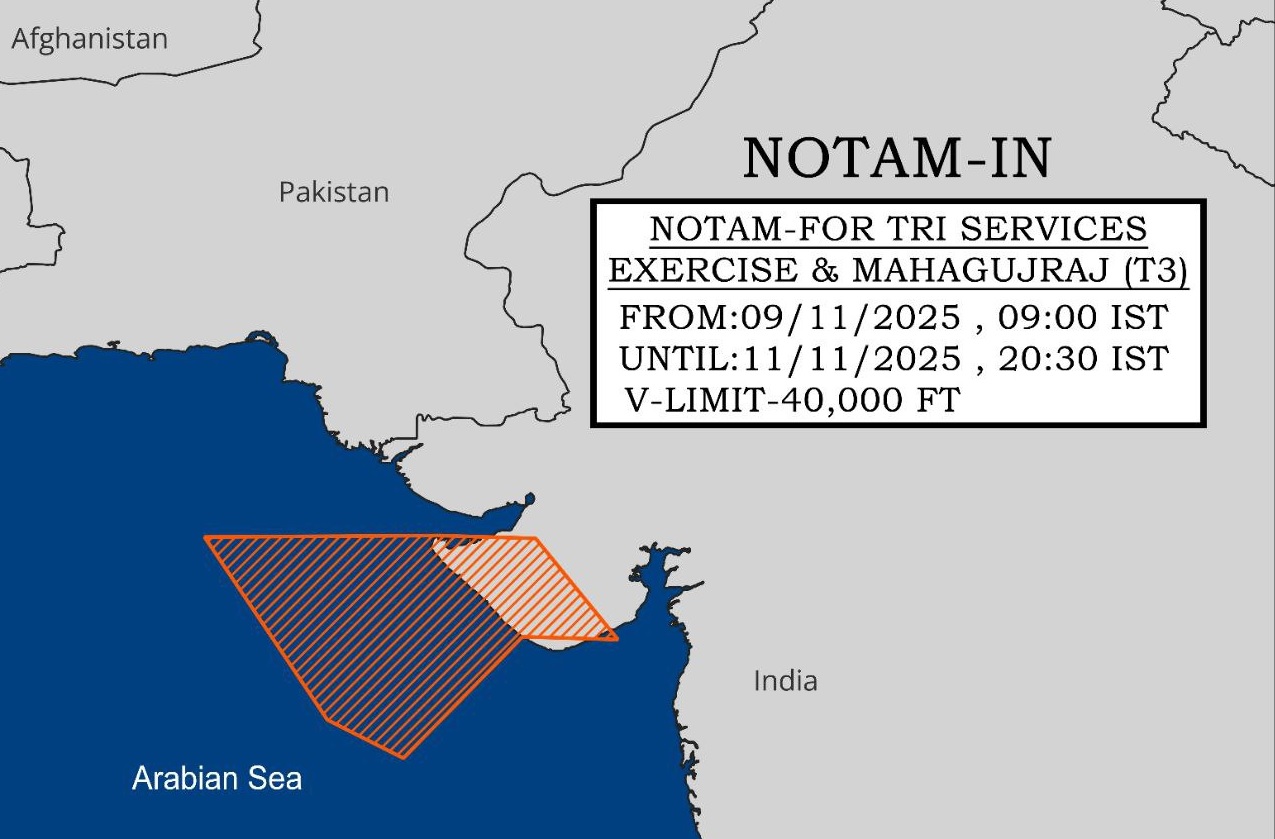
India Issues NOTAM for Tri-Services Exercise ‘Mahagujraj’ Near Pakistan Border from 9 to 11 November
India
India has issued a Notice to Airmen (NOTAM) restricting airspace over parts of Gujarat near the Pakistan border, specifically around the Sir Creek region, for a tri-services exercise named “Mahagujraj.” The NOTAM will remain active from 9 to 11 November 2025, between 09:00 and 20:30 IST, with restrictions applying up to 40,000 feet. This exercise represents a coordinated effort involving the Army, Navy, and Air Force under a unified operational framework. The restricted zone extends across coastal and border areas of Gujarat, indicating the participation of air, land, and maritime units during the exercise period. According to defence sources, Exercise Mahagujraj will include multi-domain operations to test coordination between the three services in air defence, naval movements, and ground support activities. The area near Sir Creek has been selected to focus on coastal security and joint response capabilities in a region that requires close surveillance and regular readiness drills. Sir Creek, a 96-kilometre-long estuary that marks part of the boundary between India and Pakistan, remains an area of sensitive maritime interest. Conducting a tri-services exercise in this zone supports India’s coastal and border preparedness along the western seaboard, particularly in light of increasing maritime security challenges in the Arabian Sea. The Indian Navy is expected to operate under the Western Naval Command, deploying P-8I patrol aircraft, Kolkata-class destroyers, submarines, and coastal surveillance units from Porbandar and Okha. The Indian Air Force will likely conduct missions using Su-30MKI, Jaguar, and Tejas aircraft from airbases in Jamnagar and Naliya, focusing on aerial coordination and precision targeting. Ground forces from the Southern and South Western Commands will work alongside naval and air units for coastal defence and amphibious training, supported by Army Aviation and Special Forces. The exercise may also include limited live-fire practice and air insertion drills to improve coordination and timing between different service branches. Officials said that Exercise Mahagujraj is part of ongoing efforts to strengthen joint operations capability, combining intelligence, communication, and operational planning across services. Coordination will be managed through integrated command systems under the Integrated Defence Staff (IDS) framework. The exercise comes amid continued efforts to improve surveillance and response mechanisms along the Gujarat coastline, where drone activity and radar monitoring have increased in recent months. Such exercises help maintain operational readiness and ensure effective coordination among the three branches of the armed forces. Exercise Mahagujraj will conclude on 11 November with an integrated review by senior officers, evaluating coordination, communication, and overall performance. The event forms part of India’s gradual move toward a joint theatre command structure, aimed at enhancing efficiency in future operations.
Read More → Posted on 2025-11-03 17:08:38World
China has unveiled the Feilong-300D, a new loitering munition often described as the nation’s equivalent of the Russian Geran-2 (Shahed-136). The system marks a significant step in the evolution of affordable long-range precision strike capabilities, underlining China’s emphasis on mass production and cost-effective unmanned combat systems. The Feilong-300D is a low-cost, high-endurance suicide drone designed to deliver a high-explosive warhead over a distance of more than 1,000 kilometres. With an estimated unit cost of around $10,000, the Feilong-300D offers an extremely economical alternative to expensive cruise missiles and traditional long-range standoff weapons. In terms of performance, the Feilong-300D’s range places it on par with the Geran-2/Shahed-136, but its affordability gives it a decisive edge. By comparison, the Artemis System, a newly developed drone with a similar design philosophy to the Iranian Shahed-136, reportedly offers a range of 1,000 miles (approximately 1,600 kilometres) and carries a 40 kg warhead. However, it comes at a far higher estimated cost of around $70,000 per unit — seven times the Feilong’s price. Ukrainian advancements in long-range loitering munitions provide another useful benchmark. The Ukrainian FP-1 long-range drone, capable of reaching targets around 1,000 kilometres away, is estimated to cost approximately $55,000 per unit. This places Ukraine’s system in the middle ground between China’s low-cost model and Western high-end systems. Chinese defense sources note that the Feilong-300D uses a simple piston engine, modular electronics, and a composite airframe, making it easy to produce and maintain in large quantities. The drone is equipped to carry a 40–50 kg warhead, giving it enough explosive power to destroy key battlefield targets such as radar installations, artillery batteries, and infrastructure nodes. Analysts see the Feilong-300D as part of a broader Chinese strategy focused on expendable and scalable systems capable of overwhelming enemy defenses through saturation attacks. It could play a critical role in Taiwan Strait operations or serve as an attractive export option for partner nations seeking affordable precision-strike capabilities. The emergence of low-cost, long-range drones like the Feilong-300D highlights a changing reality in modern warfare: cost efficiency is becoming as important as capability. As nations seek to balance budgets with combat effectiveness, systems like the Feilong demonstrate how industrial scale and affordability can redefine the future of conflict. With its combination of range, payload, and minimal cost, the Feilong-300D stands as a symbol of a new era in aerial warfare — one where mass, persistence, and economy of force increasingly determine success on the modern battlefield.
Read More → Posted on 2025-11-03 16:26:55World
U.S. President Donald Trump has said that the United States could deploy troops or conduct air strikes in Nigeria to halt what he described as the mass killing of Christians in the West African nation. Speaking to reporters aboard Air Force One on Sunday evening while returning to Washington from his Florida residence, Trump made clear that he was considering direct U.S. intervention if the violence continues unchecked. When asked whether he envisioned troops on the ground or air strikes, Trump responded, “Could be. I mean, other things. I envisage a lot of things. They’re killing record numbers of Christians in Nigeria … They’re killing the Christians and killing them in very large numbers. We’re not going to allow that to happen.” A Renewed Warning After Sanctions and Religious Freedom Listing Trump’s warning comes a day after his administration relisted Nigeria as a “Country of Particular Concern” (CPC) — a U.S. State Department designation for nations accused of severe violations of religious freedom. Other countries on the list include China, Myanmar, North Korea, Russia, and Pakistan. The reclassification signals renewed U.S. pressure on Abuja to address sectarian violence and religiously motivated killings, particularly in Nigeria’s Middle Belt and northern regions. According to human rights organizations, thousands of civilians — particularly Christian farmers and villagers — have been killed in attacks attributed to Islamist extremist groups, including Boko Haram and the Islamic State–West Africa Province (ISWAP), as well as armed Fulani herder militias. These groups have targeted rural communities in Plateau, Benue, Kaduna, and Nasarawa states, leading to a humanitarian crisis marked by mass displacement and food insecurity. Trump, who has previously condemned anti-Christian violence in Africa, said the U.S. would not remain passive while “religious genocide” continues. His administration has described Nigeria’s situation as “an ongoing campaign of terror against minority faiths.” Why the U.S. Is Considering Troop Deployment While U.S. military involvement in Africa is not new, the possibility of direct action in Nigeria marks a notable escalation. Washington has long supported African governments through intelligence sharing, training, and counterterrorism operations under the U.S. Africa Command (AFRICOM), which is based in Stuttgart, Germany. However, Trump’s comments suggest he may be considering unilateral action — either air strikes against militant bases in the northeast or the deployment of special operations forces to assist Nigerian troops. The stated aim would be to protect Christian communities and pressure the Nigerian government to respond more effectively to militant violence. Analysts say Trump’s statement reflects growing frustration in Washington over Nigeria’s inability to stop extremist violence despite years of U.S. assistance. Nigeria, Africa’s most populous nation, has been battling insurgencies for over a decade, with more than 350,000 deaths and millions displaced since 2009. Nigeria’s Reaction and Potential Diplomatic Fallout The Nigerian government has not yet formally responded to Trump’s remarks, but senior officials are expected to protest any suggestion of foreign troop deployment. Abuja has consistently rejected external military involvement in domestic affairs, insisting that its sovereignty and territorial integrity must be respected. Nonetheless, Trump’s comments could strain U.S.–Nigeria relations, especially after Washington reinstated the CPC designation. The move opens the door for targeted sanctions and restrictions on U.S. military aid if Abuja fails to demonstrate progress on protecting religious minorities. Diplomatic observers warn that the threat of intervention could complicate ongoing counterterrorism cooperation, particularly against Boko Haram and ISWAP, groups that already control swathes of territory near Lake Chad and along Nigeria’s borders with Niger and Chad. The Broader Context: Religious Violence and Political Tensions Nigeria’s security crisis is driven by a complex mix of ethnic, religious, and resource-based conflicts. The country’s north is predominantly Muslim, while the south is largely Christian, and political instability often takes on a sectarian character. Over the years, repeated attacks on Christian villages and churches, often involving massacres, kidnappings, and arson, have drawn international condemnation. The violence has been blamed not only on jihadist groups but also on local militia clashes over land and grazing rights, which have taken a religious dimension in recent years. For the Trump administration, however, the issue is increasingly framed as religious persecution. The president’s latest remarks reflect his broader foreign policy emphasis on defending global Christian minorities — a theme that has resonated with his conservative support base in the United States. What Comes Next It remains unclear whether Trump’s threat will translate into concrete military action. U.S. officials have not confirmed any operational planning or deployment orders, and the Pentagon has made no public statement on potential missions in Nigeria. Still, Trump’s warning sends a strong signal — both to Nigeria’s government and to Islamist groups operating within its borders — that Washington is watching closely. If violence continues to escalate, the U.S. could move from diplomatic pressure to limited military intervention, possibly involving air strikes, intelligence operations, or humanitarian protection missions under AFRICOM. For now, the message from Washington is unambiguous: the United States is prepared to act if Nigeria fails to protect its Christian population. As Trump put it bluntly aboard Air Force One — “They’re killing Christians in record numbers, and we’re not going to allow that to happen.”
Read More → Posted on 2025-11-03 15:38:25India
In a significant step toward advancing India’s naval aviation capabilities, Hindustan Aeronautics Limited (HAL) has committed to funding 30% of the design and development costs of the Deck-Based Multi Role Helicopter (DBMRH) project from its own internal resources. The remaining 70% of funding will be provided by the Government of India (GoI), pending final approval from the Cabinet Committee on Security (CCS) for full-scale execution. This strategic investment underscores HAL’s confidence in the DBMRH program, a next-generation maritime helicopter designed to operate from Indian Navy and Coast Guard ships, including destroyers, frigates, and aircraft carriers. A Major Step Toward Self-Reliance in Naval Aviation The DBMRH is being developed as an indigenous alternative to foreign naval helicopters such as the MH-60R Seahawk. The project aims to meet the Navy’s long-standing requirement for a multi-role helicopter capable of anti-submarine warfare (ASW), anti-surface warfare (ASuW), search and rescue (SAR), electronic intelligence (ELINT), and utility transport roles. According to HAL, the helicopter will feature foldable main rotor blades and tail — a critical design aspect that allows compact storage aboard naval vessels. As depicted in the folded configuration diagram, the DBMRH measures approximately 5 meters in width, 5.1 meters in height, and 5.1 meters in folded length, allowing efficient hangar storage aboard Indian Navy ships. Timeline and Development Progress The DBMRH program has been under preliminary design review by HAL’s Rotary Wing Research and Design Centre (RWRDC) in Bengaluru. The current phase involves the Detailed Design Phase (DDP), with full-scale development expected to begin after CCS approval, which is anticipated by mid-2026. 2023–2024: Completion of conceptual and preliminary design studies. 2025: Prototype tooling and system integration setup at HAL’s Helicopter Division. 2026: Expected CCS clearance and rollout of the first prototype. 2027–2028: Ground runs and maiden flight testing phase. 2029 onward: Full flight test campaign and certification leading to production readiness in the early 2030s. The program is expected to generate a major industrial ecosystem involving private sector partners for avionics, composites, landing gear, and naval mission systems integration. Technical and Operational Highlights The DBMRH is expected to weigh around 13 tonnes and feature twin engines derived from proven maritime turboshaft platforms. Its mission suite will likely include: Advanced sonar systems and torpedo launch capability for ASW. Anti-ship missile integration for offensive maritime roles. 360° AESA radar, electronic warfare suite, and data-link connectivity with naval command networks. Foldable tail boom and main rotor mechanism to minimize shipboard footprint, as highlighted in the schematic image. The helicopter’s modular design will allow multiple configurations — from combat and reconnaissance to logistics and humanitarian support — giving it flexibility akin to its Western counterparts. Strategic Importance for India The DBMRH is envisioned as the indigenous successor to the aging Seaking Mk.42B/C fleet and will complement imported MH-60R Seahawks. By ensuring that nearly 70% of the project’s investment comes from the government, with HAL contributing the remainder, the project reflects a co-development model aligning with the Atmanirbhar Bharat initiative in defense manufacturing. If executed on schedule, the DBMRH could become a cornerstone of India’s naval helicopter fleet by the early 2030s — offering self-reliance, strategic autonomy, and export potential to friendly nations seeking multi-role shipborne helicopters. In essence, HAL’s decision to invest its own resources into the DBMRH underscores its long-term confidence in the platform’s success and market potential. With CCS approval expected soon, the project marks another step toward India’s vision of a fully indigenous, blue-water capable naval aviation ecosystem.
Read More → Posted on 2025-11-03 14:12:55World
U.S. President Donald Trump has once again made clear that, at least for now, he is not considering approving a deal that would allow Ukraine to obtain long-range Tomahawk cruise missiles — weapons capable of striking deep inside Russian territory. Speaking to reporters aboard Air Force One on Sunday, Trump was asked whether he might authorize the sale of Tomahawks to NATO allies for potential transfer to Ukraine. His response was brief but telling: “No, not really,” he said, before adding that he could “change his mind” depending on how the situation evolves. This latest statement underscores Trump’s reluctance to escalate the war, despite growing pressure from Kyiv and certain NATO members to provide Ukraine with longer-range strike capabilities. The U.S. president has repeatedly emphasized that his administration seeks a negotiated end to the war rather than deeper involvement through advanced weapons transfers. The Tomahawk Debate The Tomahawk cruise missile, developed by Raytheon, is one of the most powerful precision-guided weapons in the U.S. arsenal. With a range of up to 2,500 kilometers (1,550 miles), it can accurately strike high-value targets far behind enemy lines — including, in theory, Moscow or other key Russian command centers. Ukraine has repeatedly requested Tomahawk missiles as part of its campaign to counter Russian logistics and command infrastructure. According to Western defense analysts, such missiles would significantly alter the balance of the conflict, allowing Ukraine to conduct deep-strike operations far beyond the front lines. However, Washington and NATO are aware that such a move could provoke a severe Russian response. The Kremlin has already warned that any transfer of Tomahawks to Ukraine would be viewed as a direct NATO escalation, potentially crossing what Moscow calls its “red lines.” Trump’s Balancing Act Trump’s cautious stance reflects a balancing act between his promises to “end the war quickly” and his insistence on not allowing Russia to dominate the battlefield. He has been cool toward NATO’s proposals for expanding Ukraine’s strike capabilities, arguing that each escalation brings the world closer to a direct U.S.–Russia confrontation. During his October 22 meeting at the White House with NATO Secretary General Mark Rutte, the Tomahawk issue was reportedly discussed in detail. Rutte later confirmed that the matter was “under review,” but he stressed that the final decision rests with Washington. Trump’s comments come amid growing divisions within the Western alliance. While Britain and Poland have signaled openness to the idea of providing longer-range weapons to Ukraine, others — including Germany and Italy — have expressed reservations similar to Trump’s. Kyiv’s Frustration and Moscow’s Warning For Ukrainian President Volodymyr Zelenskiy, the hesitation from Washington is deeply frustrating. Kyiv argues that Russia continues to strike Ukrainian cities from hundreds of kilometers away using cruise and ballistic missiles, and that Ukraine needs equivalent long-range tools to deter and disrupt such attacks. Moscow, meanwhile, has intensified its rhetoric. Kremlin spokesman Dmitry Peskov stated that “any delivery of Tomahawk missiles to Ukraine would represent a dangerous escalation and would force Russia to take appropriate countermeasures.” Russian state media have warned that the missiles could become “legitimate targets” the moment they enter Ukrainian territory. Uncertain Path Ahead Trump’s position — at times yes, at times no — reflects the strategic uncertainty surrounding U.S. policy toward Ukraine under his administration. While he continues to support military aid packages that include defensive systems, his hesitation over offensive, long-range weapons like the Tomahawk suggests a broader effort to avoid direct entanglement in a potentially uncontrollable conflict. For now, the Tomahawk deal remains on hold, caught between Kyiv’s urgency, NATO’s internal debates, and Washington’s cautious diplomacy. Whether Trump will “change his mind,” as he hinted, will depend on how the war evolves in the coming months — and how far he is willing to go in testing Moscow’s limits.
Read More → Posted on 2025-11-03 13:59:21World
Germany and the United Kingdom have officially signed a €450 million contract to procure the latest generation of M3 Amphibious Bridging and Ferry Systems, marking a major step in restoring a critical NATO river-crossing capability that had not seen modernization since 1999. The contract, managed through the Organization for Joint Armament Cooperation (OCCAR) under the Wide Wet Gap Crossing (WWGC) program, was confirmed by General Dynamics European Land Systems (GDELS) on October 30, 2025. This landmark joint acquisition will enhance the ability of European ground forces to conduct rapid wet-gap crossings, supporting the movement of heavy armored units, logistics columns, and combat vehicles across rivers and water obstacles in operational theaters. The investment reflects the growing recognition within NATO that land mobility and engineering support are essential for deterrence and defense in Europe’s changing security environment. A Revitalized Capability for European Defense The new M3 systems will replace the first-generation vehicles delivered in 1999, which have been in service with both Germany and the UK for more than two decades. Under this latest OCCAR agreement, the two countries will acquire an estimated 50 to 60 new M3 Amphibious Bridging and Ferry Systems, with each nation expected to receive around 25 to 30 vehicles. This quantity will not only renew existing fleets but also expand NATO’s rapid mobility capability. The upgraded model features enhanced payload capacity, improved propulsion systems, and digitalized command and control interfaces, aligning it with NATO’s interoperability standards. Under the WWGC program, the M3 fleet will allow allied forces to bridge rivers up to 100 meters wide or ferry heavy vehicles such as main battle tanks (MBTs) like the Leopard 2 and Challenger 3, both exceeding 60 tons. This restoration of large-scale river-crossing capability is seen as essential for ensuring freedom of movement across Europe, especially in scenarios involving the Baltic and Eastern European regions, where natural water barriers are frequent. Specifications of the M3 Amphibious Bridging and Ferry System Developed by General Dynamics European Land Systems, the M3 Amphibious Bridging and Ferry System is one of the most advanced military engineering vehicles in NATO service. It combines the functions of a bridge launcher and a self-propelled amphibious transporter. Key Specifications: Configuration: 4×4 wheeled amphibious vehicle Crew: 2 operators (driver and commander) Weight: Approx. 28 tons Engine: Diesel engine generating over 400 hp Speed (land): Up to 80 km/h Speed (water): Up to 14 km/h with twin water jet propulsion Payload capacity: Over 85 tons in bridge configuration Bridge length: 100 meters (with 8 M3 units) Deployment time: Less than 10 minutes Operation: Fully interoperable within NATO bridging units The M3 can operate independently or in combination with other vehicles to form a continuous bridge or ferry system, depending on mission requirements. When deployed in water, multiple M3 units connect via hydraulic ramps to create a stable, load-bearing structure capable of supporting heavy armored formations. Strategic Importance for NATO For years, NATO’s river-crossing capability had been considered a forgotten art of warfare. The new M3 fleet addresses this gap by restoring one of the alliance’s most crucial logistical tools—wet-gap crossing mobility. This capability allows armored and mechanized formations to maintain tempo, avoid chokepoints, and respond flexibly to dynamic battlefield environments. Defense experts note that the deal represents a broader shift toward joint European defense projects, with OCCAR playing a central role in coordinating procurement and standardization among member states. By pooling resources, Germany and the UK ensure not only cost efficiency but also interoperability across NATO’s engineering units, allowing joint exercises and combined operations to be carried out more effectively. Production and Delivery Timeline The contract’s value, exceeding €450 million, covers not only the production of new M3 vehicles but also training, maintenance packages, and spare parts support. Deliveries are expected to begin in late 2027, with both nations aiming for full operational capability before 2030. The systems will be produced at GDELS manufacturing sites in Germany and Spain, leveraging a network of European suppliers. Both countries are expected to integrate the vehicles into their respective engineering regiments, which support armored and mechanized brigades during NATO exercises and contingency deployments. A Symbol of Renewed Allied Engineering Strength The joint procurement of the M3 Amphibious System symbolizes a revival of Europe’s collective defense readiness. As geopolitical tensions continue to rise and rivers once again become strategic obstacles in potential conflict zones, NATO’s ability to **bridge the gap—literally and figuratively—**is once more being taken seriously. In an era defined by rapid mobility and combined arms warfare, the M3 system gives NATO’s land forces a decisive engineering advantage, ensuring that no natural barrier can halt the advance of allied power. In essence, the M3’s return is not just about hardware—it’s about restoring confidence in Europe’s capacity to move, respond, and defend together.
Read More → Posted on 2025-11-03 13:31:54World
Pakistan’s long-awaited Hangor-class submarines, built under a major defense collaboration with China, are set to enter service in 2026, according to Pakistan Navy Chief Admiral Naveed Ashraf. The announcement, made on November 2, 2025, marks a crucial milestone in Pakistan’s drive to modernize its naval capabilities and counter India’s maritime influence in the Indian Ocean Region (IOR). Speaking to local media and citing reports from China’s Global Times, Admiral Ashraf confirmed that the first four Hangor-class submarines—constructed in Wuhan, China—will be delivered before assembly shifts to Karachi Shipyard & Engineering Works (KS&EW) for the remaining four. The induction will form the backbone of Pakistan’s next-generation underwater fleet, significantly enhancing the country’s strategic deterrence and sea denial capabilities. A Deepening China–Pakistan Maritime Axis The Hangor-class program is one of the most ambitious naval undertakings in Pakistan’s history, reflecting an expanding maritime partnership between Islamabad and Beijing. The project, worth an estimated $5 billion, involves the construction of eight submarines based on China’s Type 039A/041 Yuan-class (export variant S20) platform. Four of these submarines are being built at China Shipbuilding & Offshore International Company (CSOC), while the remaining four will be assembled in Pakistan under a transfer-of-technology (ToT) agreement. This arrangement is designed not only to expand Pakistan’s submarine fleet but also to develop local industrial and maintenance expertise, allowing KS&EW to undertake future overhauls and indigenous production. Specifications and Capabilities The Hangor-class represents a major leap in technology and endurance compared to Pakistan’s older Agosta 90B and Agosta 70 submarines. While official specifications remain partially classified, available data and export model references provide a clear picture of its potent design: Length: Approximately 76 meters Displacement: Around 2,600 tons (submerged) Propulsion: Diesel-electric with Air-Independent Propulsion (AIP) system, allowing extended underwater endurance up to three weeks without surfacing Speed: Over 18 knots submerged Crew: 38–40 personnel Armament: Six 533mm torpedo tubes Capable of launching anti-ship cruise missiles (likely Babur-3) Option to deploy mines and heavyweight torpedoes Range: Estimated 8,000 km (with AIP) Sonar and Combat Systems: Equipped with advanced flank array sonar, integrated combat management systems, and electronic warfare suites The Babur-3 submarine-launched cruise missile (SLCM)—tested by Pakistan in recent years—may serve as the Hangor’s primary strike weapon, providing nuclear second-strike capability, a critical element of Pakistan’s credible minimum deterrence doctrine. Strategic Implications The Hangor-class induction directly reshapes the undersea balance in South Asia. India’s Project 75 Scorpène-class fleet and upcoming Project 75(I) submarines have given New Delhi a clear advantage in recent years. However, Pakistan’s move—backed by Chinese technology and logistics—seeks to narrow that gap. For Beijing, the partnership is equally strategic. By arming Pakistan with advanced submarines, China ensures secure maritime access through the Arabian Sea and safeguards the sea lanes vital for the China–Pakistan Economic Corridor (CPEC) and Gwadar Port, which form the western link of the Belt and Road Initiative (BRI). The deployment of Hangor-class submarines strengthens China’s naval footprint near the Strait of Hormuz, a critical chokepoint for global energy supplies. Industrial and Strategic Autonomy Building half of the submarines at KS&EW marks a major milestone in Pakistan’s defense industrial base. The shipyard, previously engaged in refits and maintenance of Agosta-class vessels, is now evolving into a submarine production center capable of integrating complex Chinese systems domestically. This transition supports Pakistan’s broader goal of technological self-reliance, while also providing valuable experience for future indigenous submarine programs.
Read More → Posted on 2025-11-03 13:00:35World
In a stunning revelation that has sparked diplomatic tremors across South Asia, U.S. President Donald Trump claimed that Pakistan has been secretly testing nuclear weapons, possibly explaining the recent spate of earthquakes and mysterious explosions reported across Pakistan’s western regions. During a CBS interview, At 14:35, President Trump said: “Russia’s testing and China’s testing … They don’t talk about it. … We’re going to test because they test and others test. And certainly North Korea’s been testing. Pakistan’s been testing.” The statement, later edited out of the network’s final broadcast, has since circulated widely on social media, fueling intense speculation that Pakistan may have resumed underground nuclear testing in Balochistan — the same province where its first atomic detonations took place in 1998. A Claim That Shocked Global Observers President Trump’s assertion grouped Pakistan, China, Russia, and North Korea together as nations currently engaged in nuclear testing. The remark, though brief, was enough to reignite concerns over an emerging multi-polar nuclear race. Within hours, defense experts and analysts around the world began dissecting the comment.In India, Defence Expert Major General Dhruv Katoch (Retd) told ANI: “President Trump has made a claim that Russia, China, Pakistan, and North Korea are testing nuclear weapons. If these countries were actually conducting tests, the world would have learned by now. There are systems to detect those explosions, and they are prevalent worldwide.” He further added that Trump’s statement could be part of a domestic strategy to justify America’s own return to nuclear testing, saying: “President Trump is trying to create a base within his own constituency for carrying out nuclear weapon testing… But if he is correct and Pakistan is indeed carrying out such tests, it’s a matter of grave concern.” Balochistan: The Epicenter of Suspicion The allegations come amid a wave of low-magnitude earthquakes and unexplained explosions in Balochistan and Gilgit-Baltistan, regions long associated with Pakistan’s nuclear infrastructure. In the past two months alone, several tremors — numbering over two dozen — were recorded near Sargodha, a known military district that hosts key missile and nuclear facilities. Independent observers noted that some of these events had unusual depth patterns, inconsistent with natural tectonic activity. Simultaneously, local reports from Yazbeen village in the Karambar Valley (Gilgit-Baltistan) described an enormous blast on October 16, which collapsed an entire mountainside, destroying homes and farmland. Witnesses spoke of a “thick smoke cloud” and a “strong chemical odour” that lingered for hours — raising fears of an underground detonation gone wrong. One eyewitness described the scene as “apocalyptic — everything vanished in seconds.” Power poles and transformers were shredded, livestock were killed, and entire valleys were blanketed in dust. Though the Pakistani government attributed the incident to a natural landslide, satellite imagery appeared to show surface disruptions consistent with explosive events, according to OSINTTV, an open-source intelligence channel that has been tracking unusual activities in the region since August. Connecting the Dots: Earthquakes and Tests Trump’s timing adds another layer to the mystery. His CBS interview coincides with a period when Balochistan experienced multiple shallow earthquakes, some measuring between 4.5 and 5.2 magnitude, concentrated near Pakistan’s known military zones. Experts have pointed out that underground nuclear detonations can produce localized seismic events mimicking small earthquakes, although they leave telltale patterns distinguishable to trained seismologists. However, no international seismic-monitoring agency, including the Comprehensive Nuclear-Test-Ban Treaty Organization (CTBTO), has so far confirmed nuclear-related anomalies. This absence of public data has not stopped speculation from spreading, particularly among Baluchi activists, who accuse Islamabad of using their land as a testing ground at the expense of local lives and ecology. The Baloch Human Rights Council (BHRC) has warned that continued underground activities could contaminate water sources and trigger radiation-linked illnesses — echoing the long-term impacts already documented near Pakistan’s Chagai test sites from 1998. The Global Fallout If proven true, Pakistan’s secret testing would violate international norms and risk severe diplomatic consequences. It would mark Pakistan’s first nuclear test in over 25 years, since the Chagai-I and II explosions of May 1998. It could also provoke a sharp reaction from India, which has maintained nuclear restraint under the “No First Use” policy but continues to modernize its deterrent. For the United States, Trump’s claim provides potential political cover to restart America’s own nuclear testing program, suspended since 1992. The global community, especially the IAEA and CTBTO, would likely demand evidence and immediate access to Pakistan’s suspected sites. But given the country’s history of strategic opacity and its refusal to sign the Comprehensive Nuclear-Test-Ban Treaty (CTBT), transparency may be unlikely. A Region on the Brink Balochistan sits atop fragile tectonic plates, making it naturally earthquake-prone. Yet, if even a fraction of the recent tremors are connected to weapons testing, the humanitarian implications could be disastrous. Experts warn that underground detonations in populated or mountainous regions risk rock displacement, radiation leaks, and groundwater contamination — all of which could endanger millions of Baloch civilians. Moreover, renewed testing could spur India, China, and North Korea into conducting their own “modernization” experiments, shattering decades of fragile restraint under the global test ban regime. Alarming Words, Unanswered Questions President Trump’s off-hand but explosive claim — that “Pakistan has been testing nuclear weapons” — has reignited one of the world’s most dangerous debates. While no hard evidence has yet surfaced to confirm secret nuclear detonations, the combination of seismic anomalies, unexplained blasts, and mounting local testimonies makes the situation too serious to ignore. If these incidents are indeed natural quakes, Pakistan faces another kind of challenge — one of transparency and credibility, as suspicion grows with every tremor. But if Trump’s words turn out to be even partially true, the world may be witnessing the quiet beginning of a new nuclear shadow war beneath South Asia’s soil.
Read More → Posted on 2025-11-03 12:30:59World
South Korean shipbuilder Hanwha Ocean has formally presented its offer to build KSS-III PN submarines for the Philippine Navy, marking a significant step in Manila’s long-awaited submarine acquisition program. The proposal was directly pitched to President Ferdinand Marcos Jr. on the sidelines of the Asia-Pacific Economic Cooperation (APEC) leaders’ meeting in Gyeongju on Saturday, according to the Presidential Communications Office (PCO). Hanwha Ocean, formerly known as Daewoo Shipbuilding & Marine Engineering (DSME), outlined an extensive package that goes beyond merely supplying submarines. The company proposed to construct a dedicated submarine base, set up a local Maintenance, Repair, and Overhaul (MRO) center, and establish a comprehensive training program for Filipino naval personnel. This would include advanced simulators, operational systems, and on-site mentorship from Korean experts. A Leap Toward a Self-Reliant Submarine Force The proposed KSS-III PN is a derivative of South Korea’s KSS-III Batch II class, one of the most modern non-nuclear attack submarines in Asia. Displacing around 2,800 tons, it is designed for extended underwater endurance and enhanced stealth. The KSS-III series is South Korea’s first fully indigenous submarine class, equipped with advanced combat management systems, modern sonar arrays, and lithium-ion batteries—a feature that provides significantly longer submerged operation time compared to traditional lead-acid batteries. The submarine’s Air-Independent Propulsion (AIP) system allows it to remain underwater for more than 20 days without surfacing, a critical advantage in surveillance and deterrence missions across the South China Sea. The KSS-III PN variant would likely incorporate South Korean Hyunmoo-4-4 cruise missile capability or export-compliant equivalents, depending on Manila’s operational requirements. Competing Offers and Strategic Choices Hanwha Ocean’s bid faces fierce competition from major European defense companies. France’s Naval Group is offering its Scorpène-class submarines, already in service with the Indian, Brazilian, and Malaysian navies. Spain’s Navantia is pitching the S-80PN, a larger design with an advanced AIP system. Meanwhile, Italy’s Fincantieri, in collaboration with Germany’s Thyssenkrupp Marine Systems (TKMS), has proposed the Type U212 Near Future Submarine (NFS) — a design boasting low acoustic signatures and extensive automation. Industry observers note that Hanwha’s edge lies in its comprehensive technology transfer and industrial partnership plan. By offering local MRO facilities and training, Hanwha aims to align with the Philippines’ Self-Reliant Defense Posture (SRDP) initiative, which prioritizes domestic capacity-building in defense manufacturing and logistics. Budget, Vision, and National Defense Priorities The Philippines remains one of the few Southeast Asian nations without a submarine fleet, a gap that the Marcos administration is eager to address. The acquisition is part of Horizon 3 of the Armed Forces of the Philippines (AFP) Modernization Program, which envisions the procurement of at least two submarines in the near term. AFP Chief of Staff Gen. Romeo Brawner Jr. earlier described the move as essential to defending the nation’s maritime borders. “It’s a dream for us to get at least two submarines,” Brawner said. “We are an archipelago, so we need this kind of capability because it’s really difficult to defend the entire archipelago without submarines.” The Marcos administration has committed to allocating around ₱2 trillion (approximately US$35 billion) over the next decade for overall defense modernization. While the submarine program’s exact budget remains undisclosed, defense analysts estimate it could range between US$1.2 billion and US$1.8 billion for two units, depending on system configurations and training infrastructure. Strategic Implications If accepted, Hanwha Ocean’s offer could mark a strategic milestone in Philippine-Korean defense relations, following the successful delivery of FA-50 light combat aircraft and ongoing naval projects. The deal would also deepen Manila’s alignment with Seoul at a time of rising tensions in the South China Sea and increasing emphasis on regional maritime deterrence. For South Korea, securing the contract would reinforce its growing status as a leading global defense exporter, adding another regional partner to its expanding submarine customer base. As deliberations continue, the Philippine Navy’s Submarine Acquisition Project Management Team (SAPMT) is expected to finalize its recommendations by mid-2025, paving the way for Manila’s first step toward achieving a true underwater defense capability.
Read More → Posted on 2025-11-03 12:03:28Search
Top Trending
-
 Agneepath Scheme replaced with Sainik Samman Scheme 2024, Defence Minister Rajnath Singh Relaunched Agniveer Scheme
Agneepath Scheme replaced with Sainik Samman Scheme 2024, Defence Minister Rajnath Singh Relaunched Agniveer Scheme
-
 Death in Dhaka: CIA Links Surface After Putin Shielded Modi During SCO Meet
Death in Dhaka: CIA Links Surface After Putin Shielded Modi During SCO Meet
-
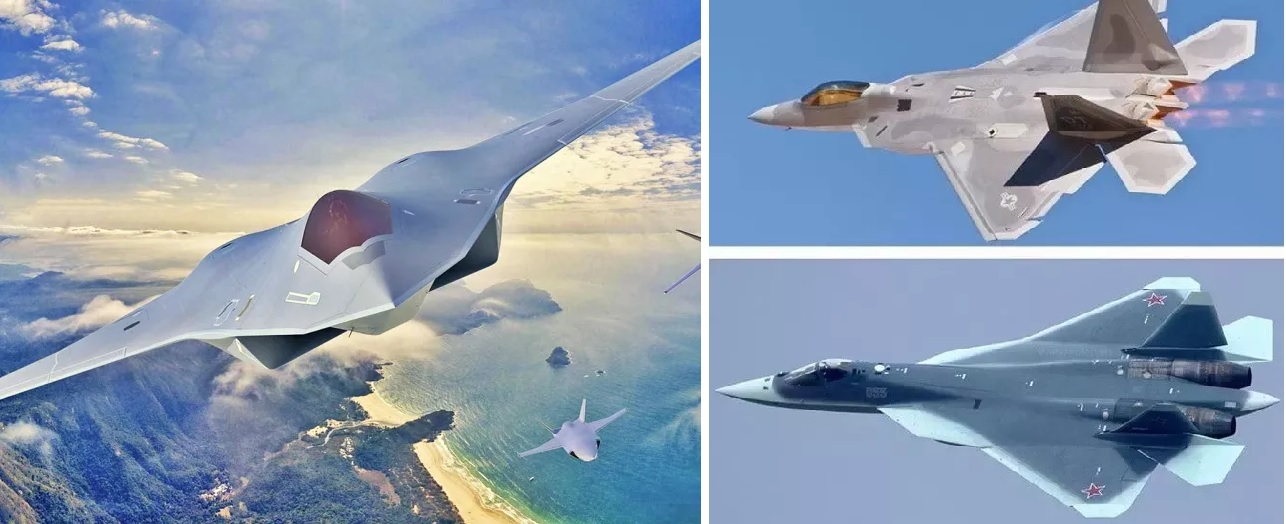 Key Differences Between 5th vs. 6th Generation Fighter Jets
Key Differences Between 5th vs. 6th Generation Fighter Jets
-
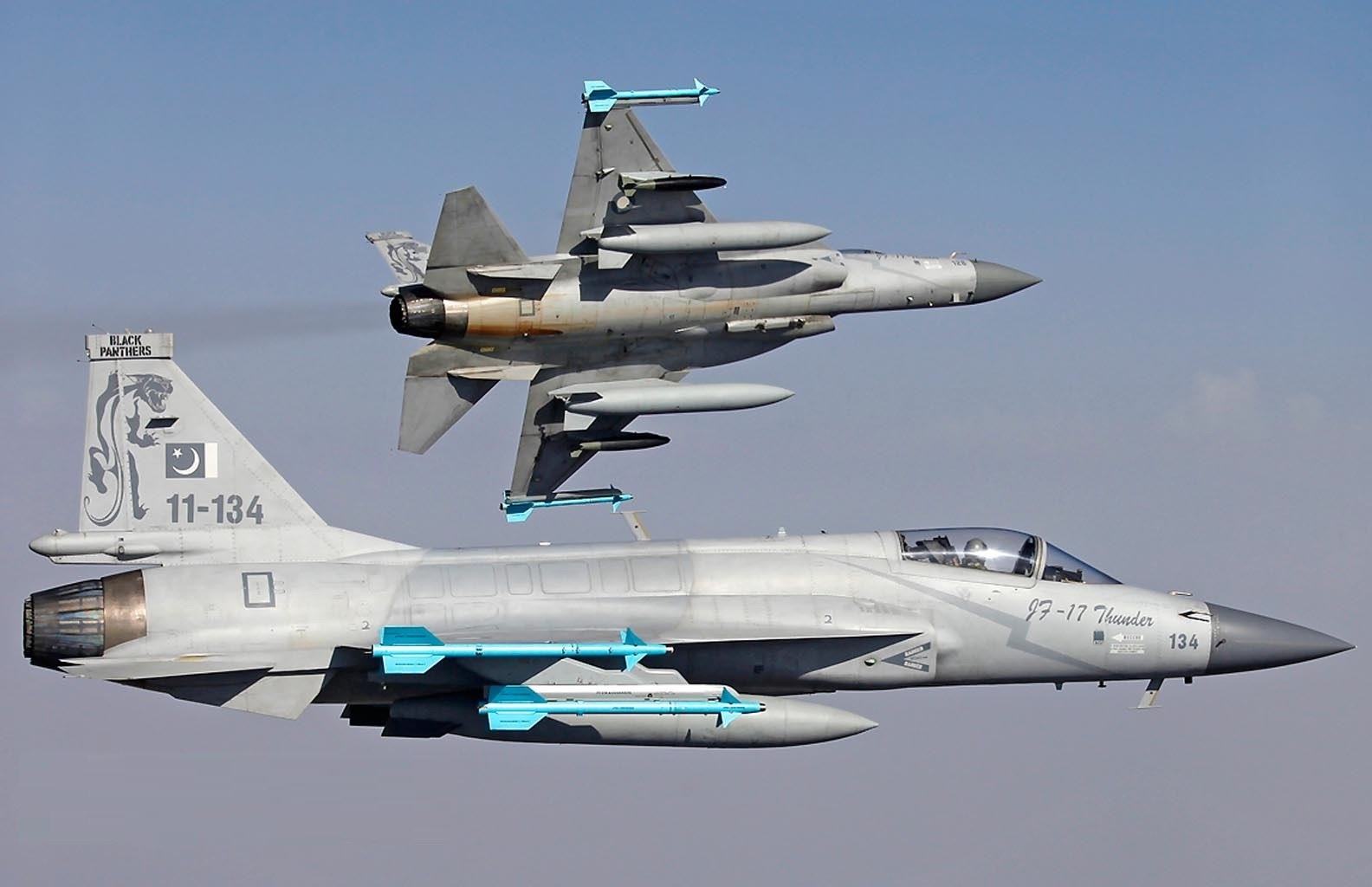 Pakistan Air Force to Unveil Stealth-Enhanced JF-17 Block 4 Fighter Jet by 2028
Pakistan Air Force to Unveil Stealth-Enhanced JF-17 Block 4 Fighter Jet by 2028
-
 Pakistan Announces 15% Increase in Defence Budget for 2024-25 Amid Economic Crisis
Pakistan Announces 15% Increase in Defence Budget for 2024-25 Amid Economic Crisis
-
 India’s AMCA Engine Decision: Safran vs. Rolls-Royce Final Expected by 2025
India’s AMCA Engine Decision: Safran vs. Rolls-Royce Final Expected by 2025
-
 India's TEDBF Program Takes Shape First Flight by 2028: Aiming for Naval Supremacy with Advanced Stealth and Technology
India's TEDBF Program Takes Shape First Flight by 2028: Aiming for Naval Supremacy with Advanced Stealth and Technology
-
 What Would Happen if the USA Left NATO? A Comprehensive Analysis
What Would Happen if the USA Left NATO? A Comprehensive Analysis
Top Trending in 4 Days
-
 Mass Killings in Sudan: Satellite Images Reveal Atrocities as Civil War Turns into Genocide
Mass Killings in Sudan: Satellite Images Reveal Atrocities as Civil War Turns into Genocide
-
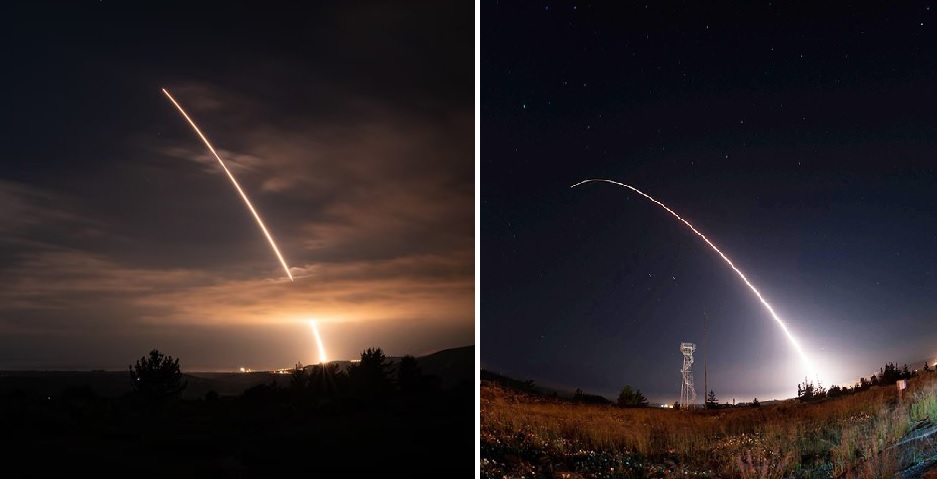 United States Successfully Conducts Unarmed Test Launch of Minuteman III ICBM from California
United States Successfully Conducts Unarmed Test Launch of Minuteman III ICBM from California
-
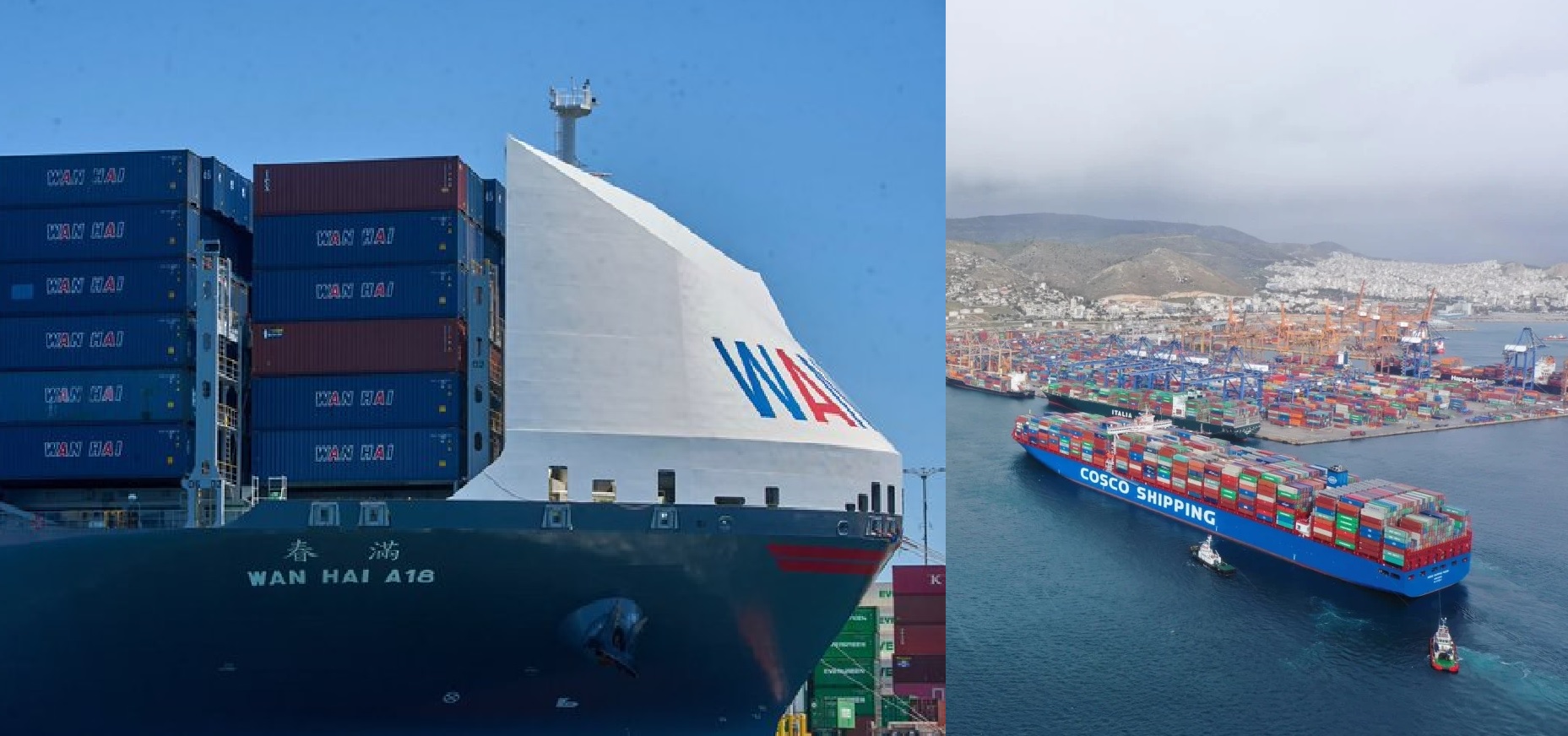 China Unveils the World’s First Thorium-Powered Cargo Ship, Carry up to 14,000 Shipping Containers
China Unveils the World’s First Thorium-Powered Cargo Ship, Carry up to 14,000 Shipping Containers
-
 Blogger Claims Il-76 Cargo Plane Shot Down in Sudan Was Recently Purchased from Kyrgyzstan for $12 Million
Blogger Claims Il-76 Cargo Plane Shot Down in Sudan Was Recently Purchased from Kyrgyzstan for $12 Million
-
 China Begins Trial Production at the World’s First Flying Car Smart Factory in Guangzhou
China Begins Trial Production at the World’s First Flying Car Smart Factory in Guangzhou
-
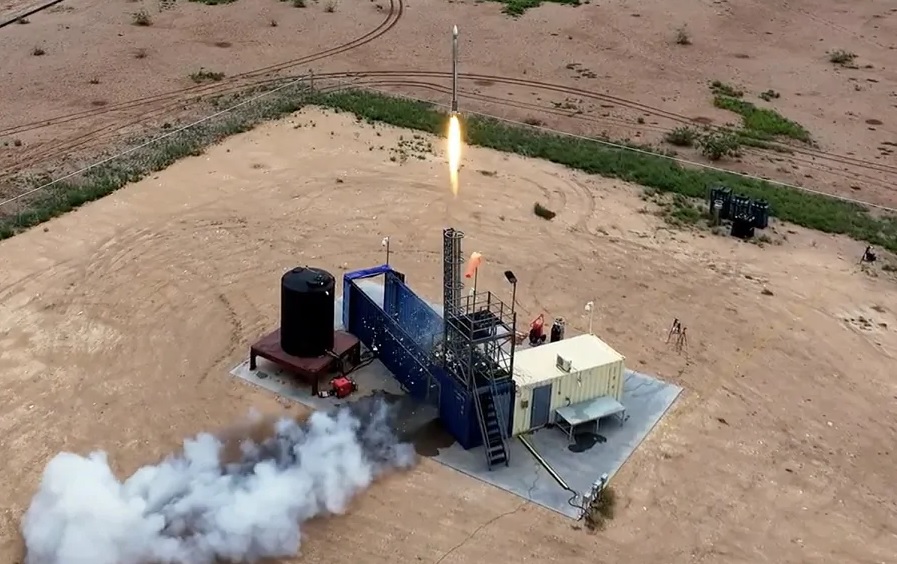 Hanwha Defense USA Invests in Firehawk Aerospace to Accelerate 3D-Printed Rocket Motor Production
Hanwha Defense USA Invests in Firehawk Aerospace to Accelerate 3D-Printed Rocket Motor Production
-
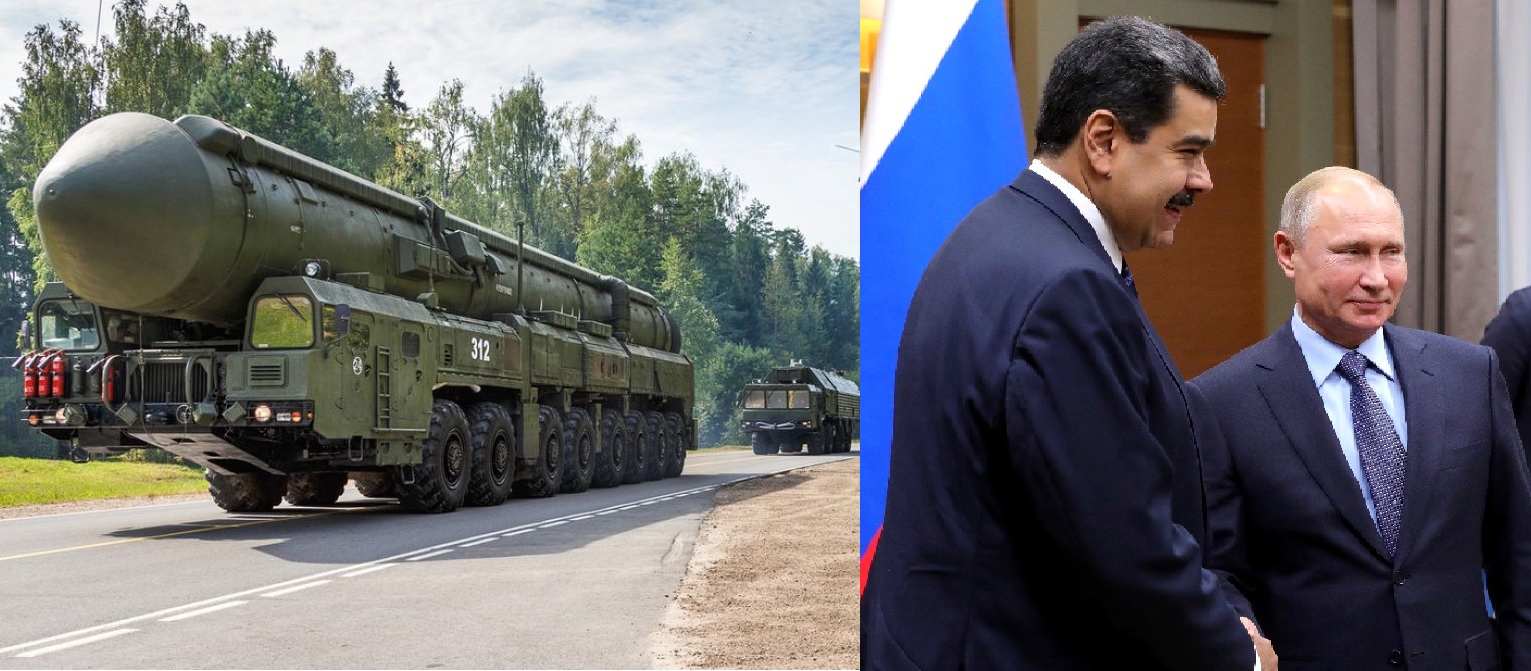 Russia Considers Supplying Venezuela with the “Oreshnik” Missile System — Why It Matters
Russia Considers Supplying Venezuela with the “Oreshnik” Missile System — Why It Matters
-
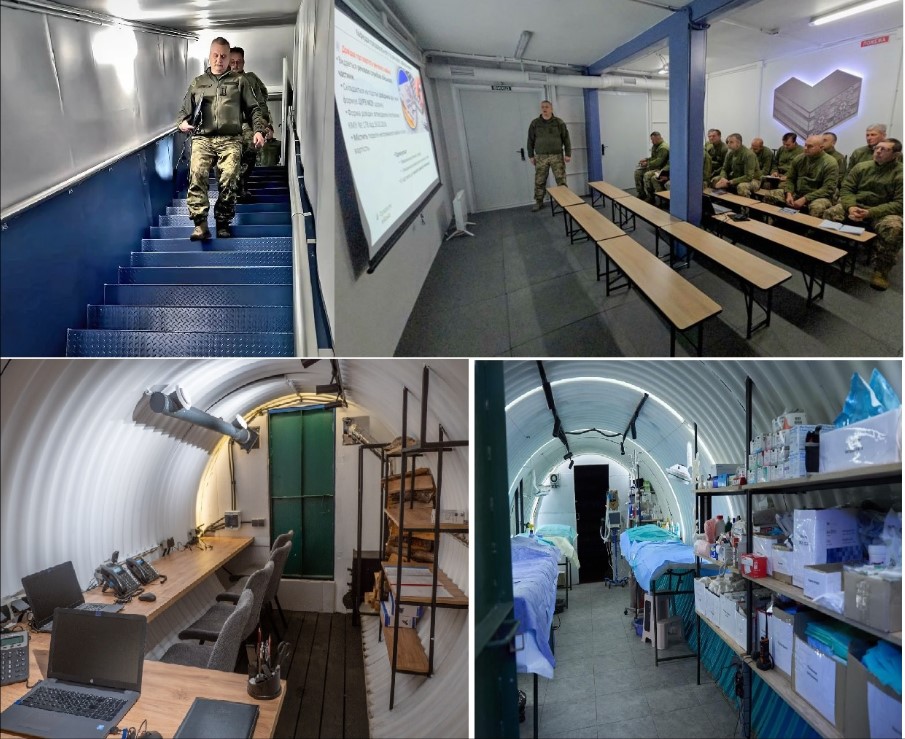 Ukraine Opens First Underground Military Training Hub Built with Metinvest’s Steel Dream Technology
Ukraine Opens First Underground Military Training Hub Built with Metinvest’s Steel Dream Technology

